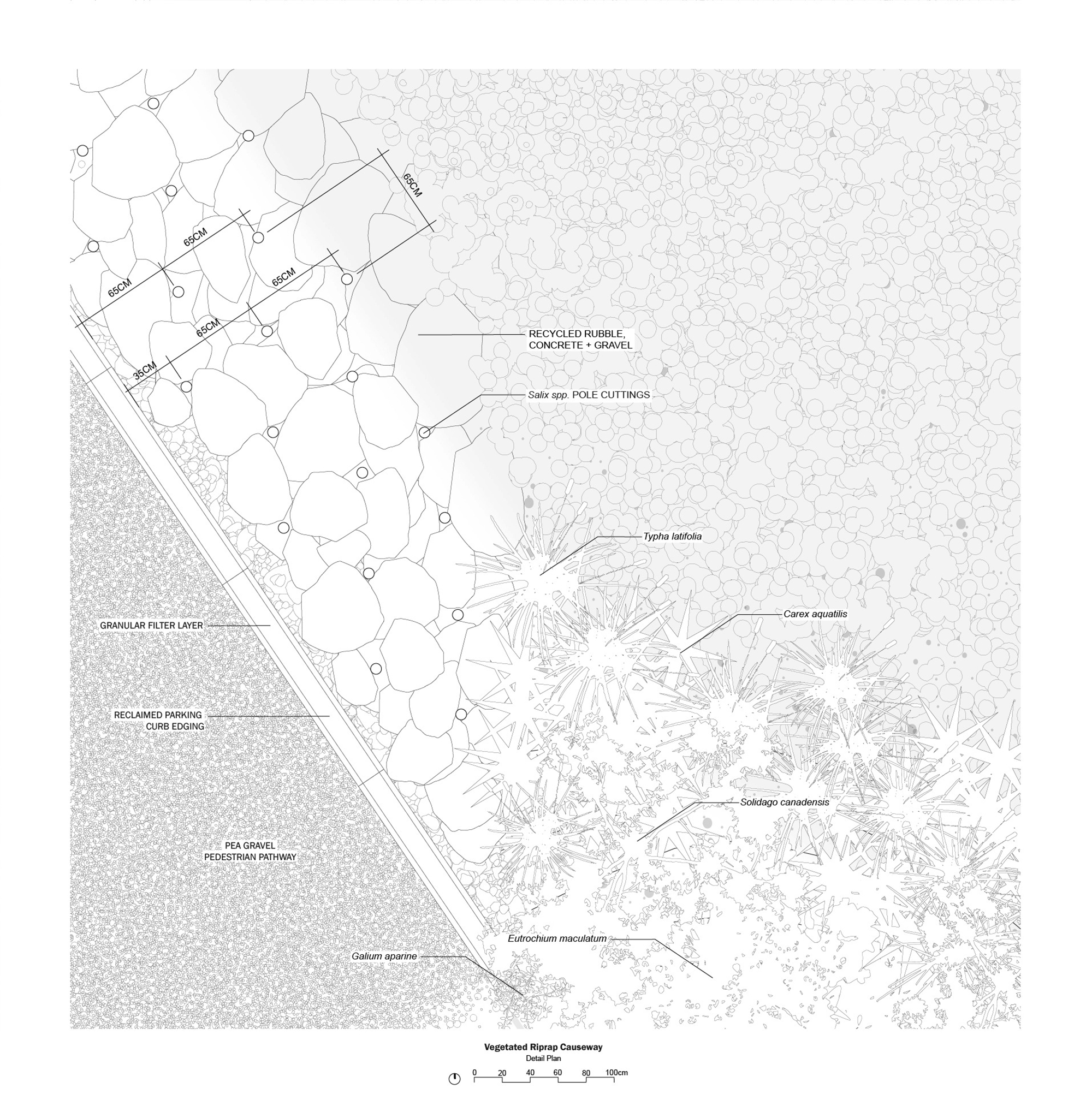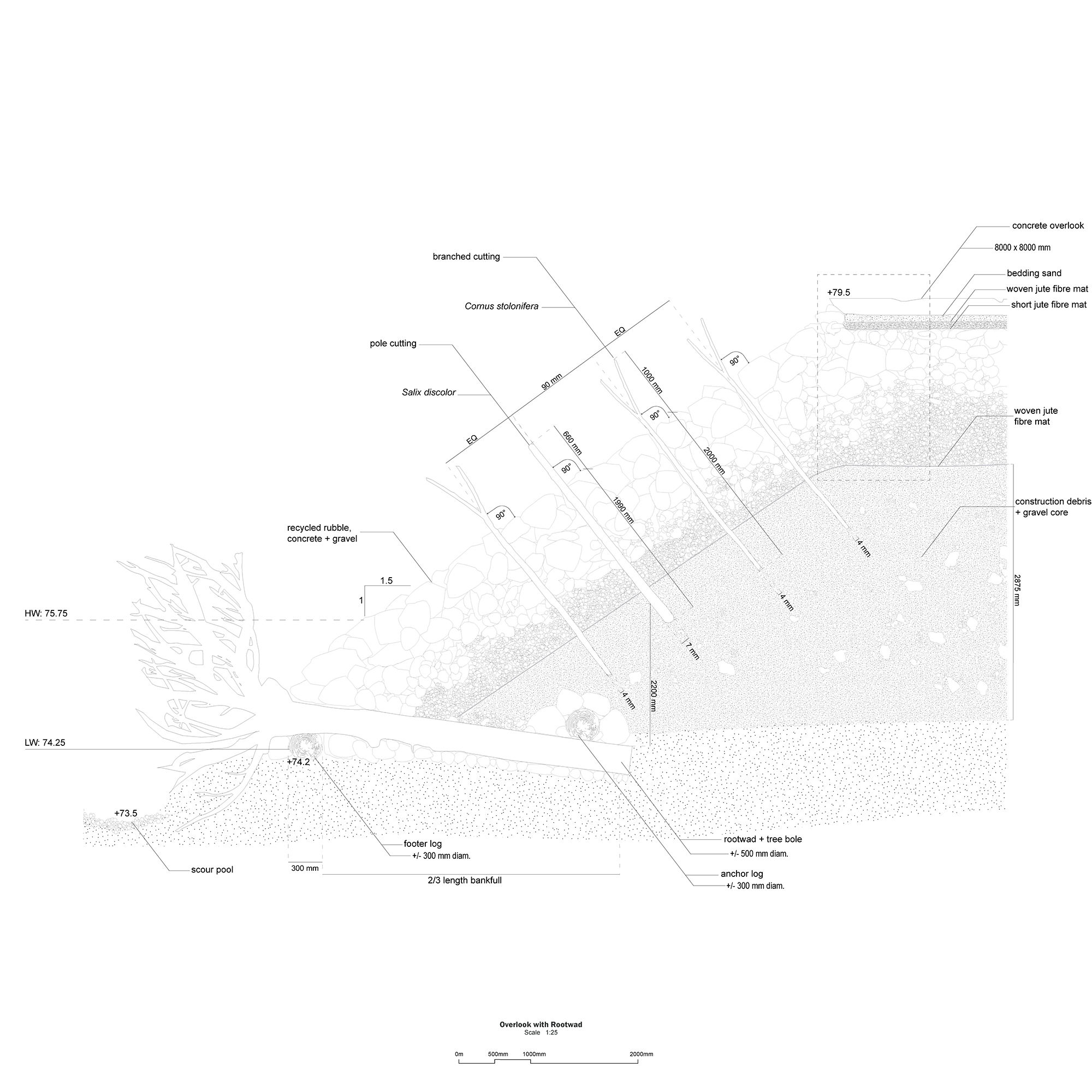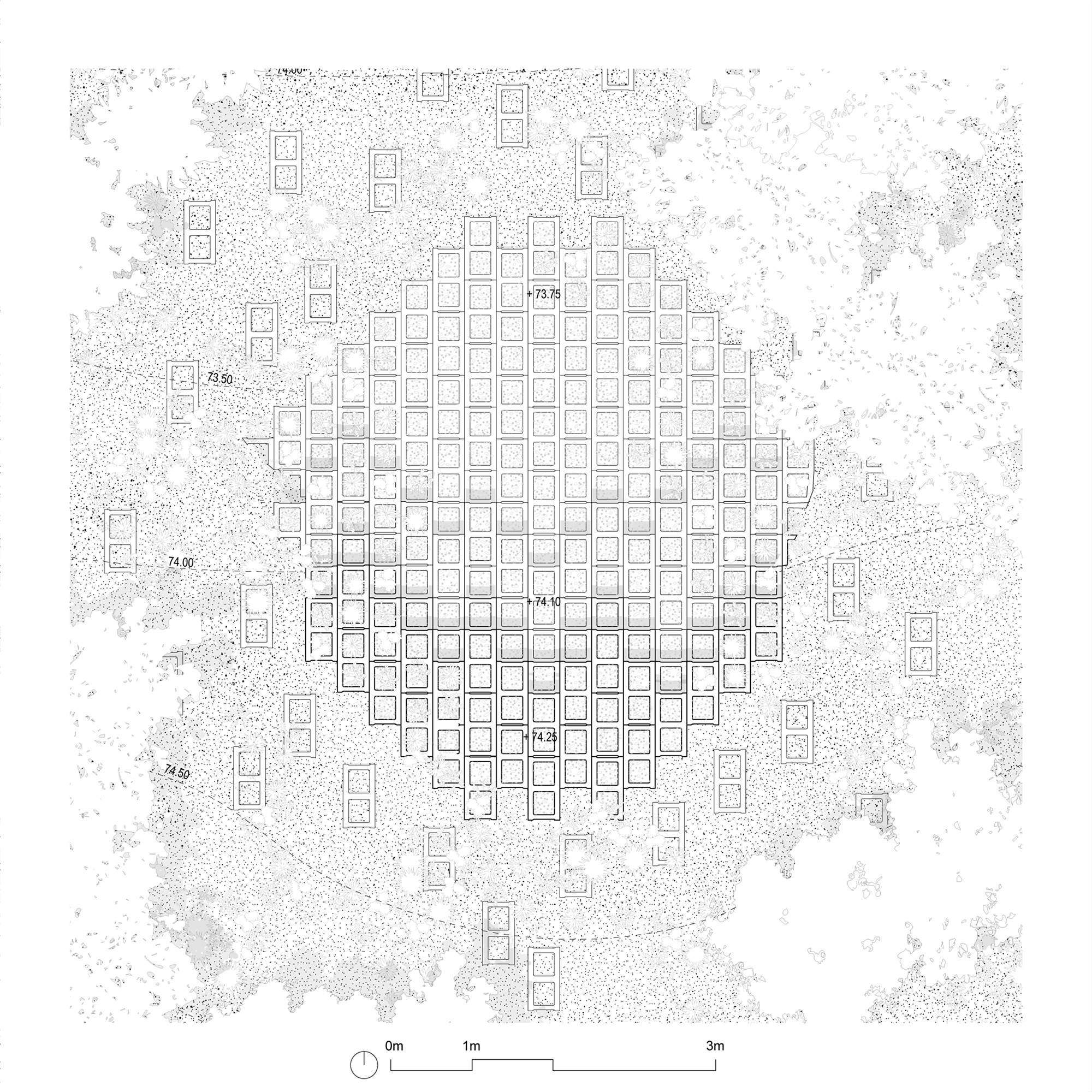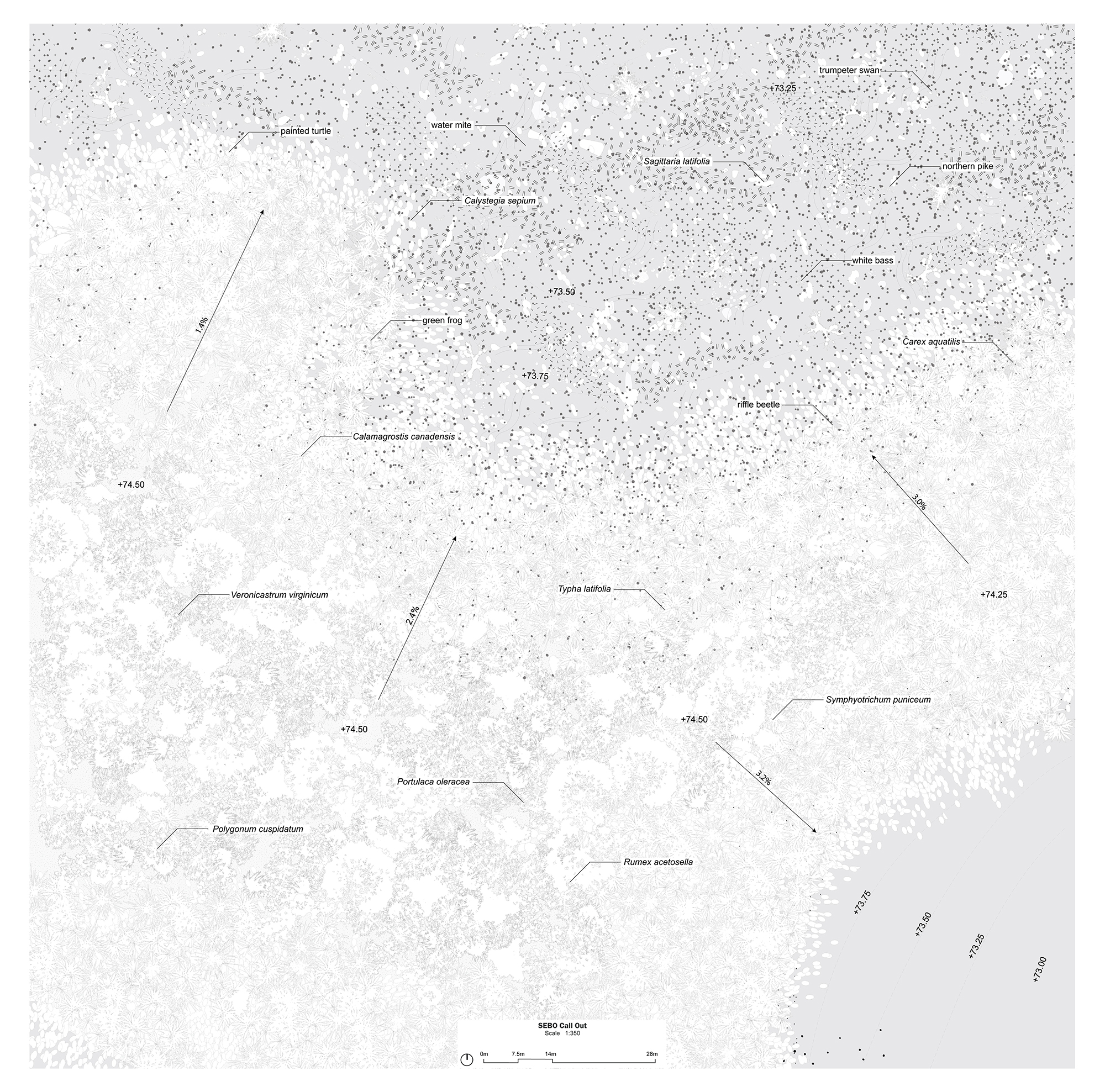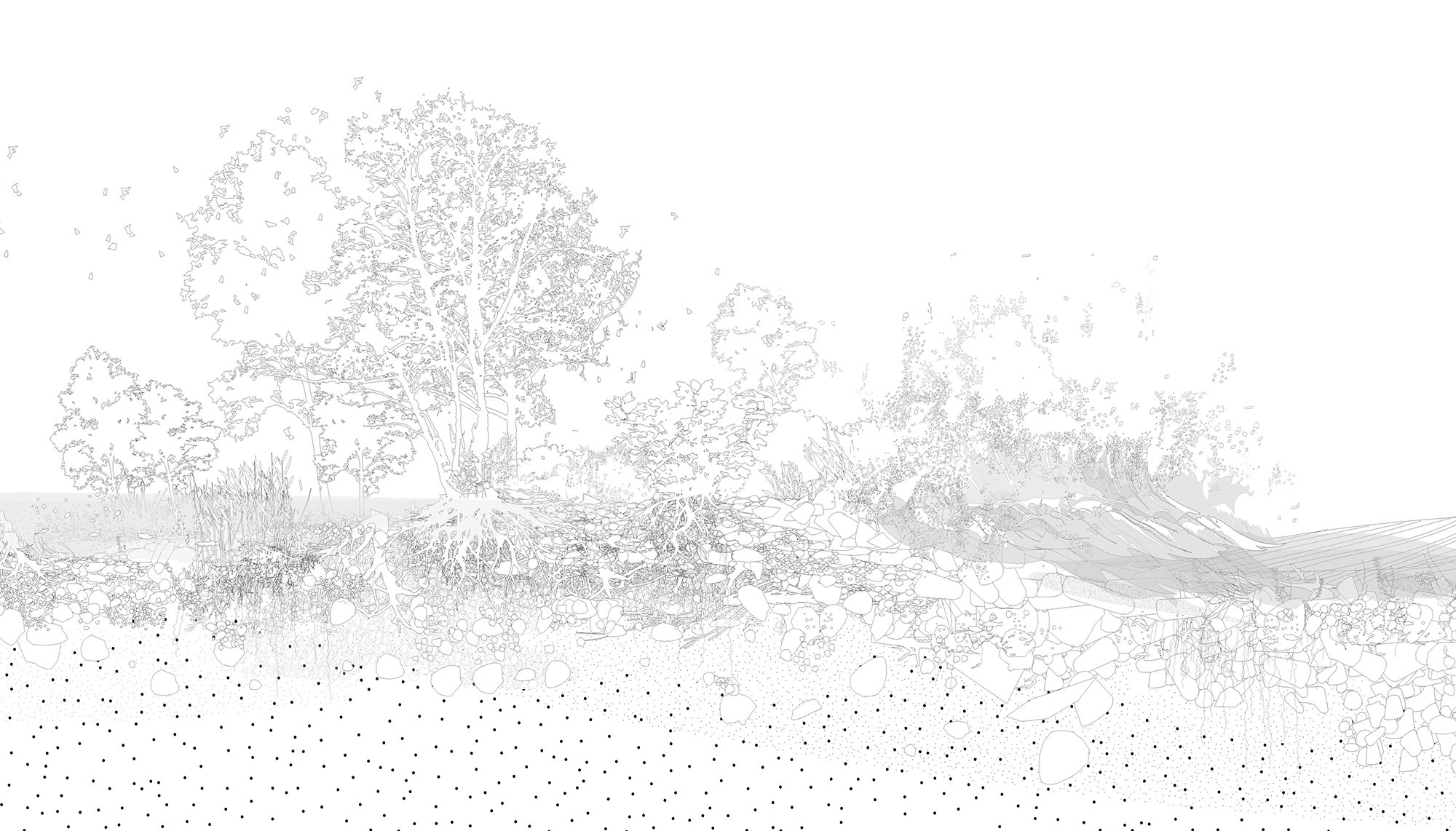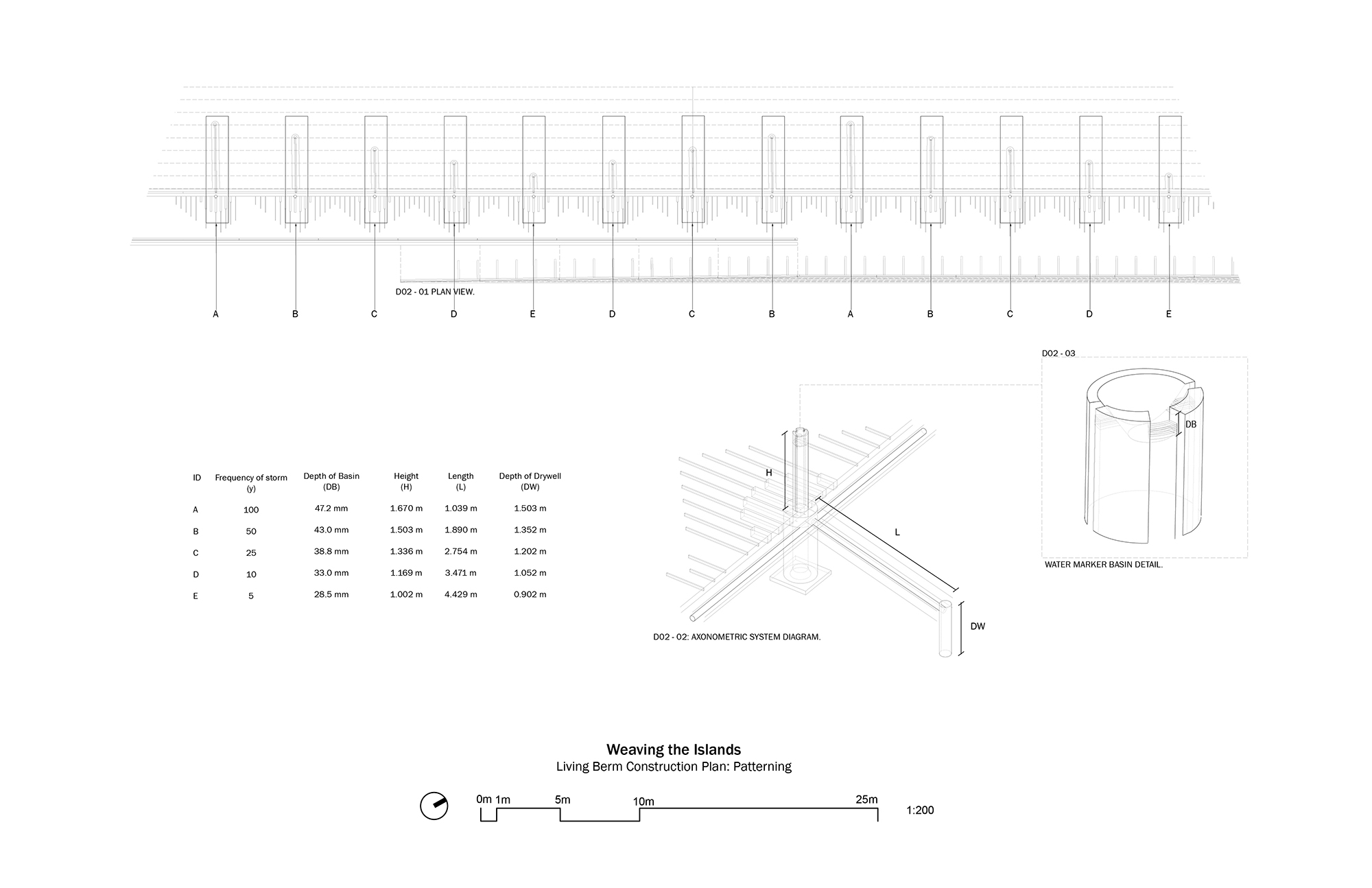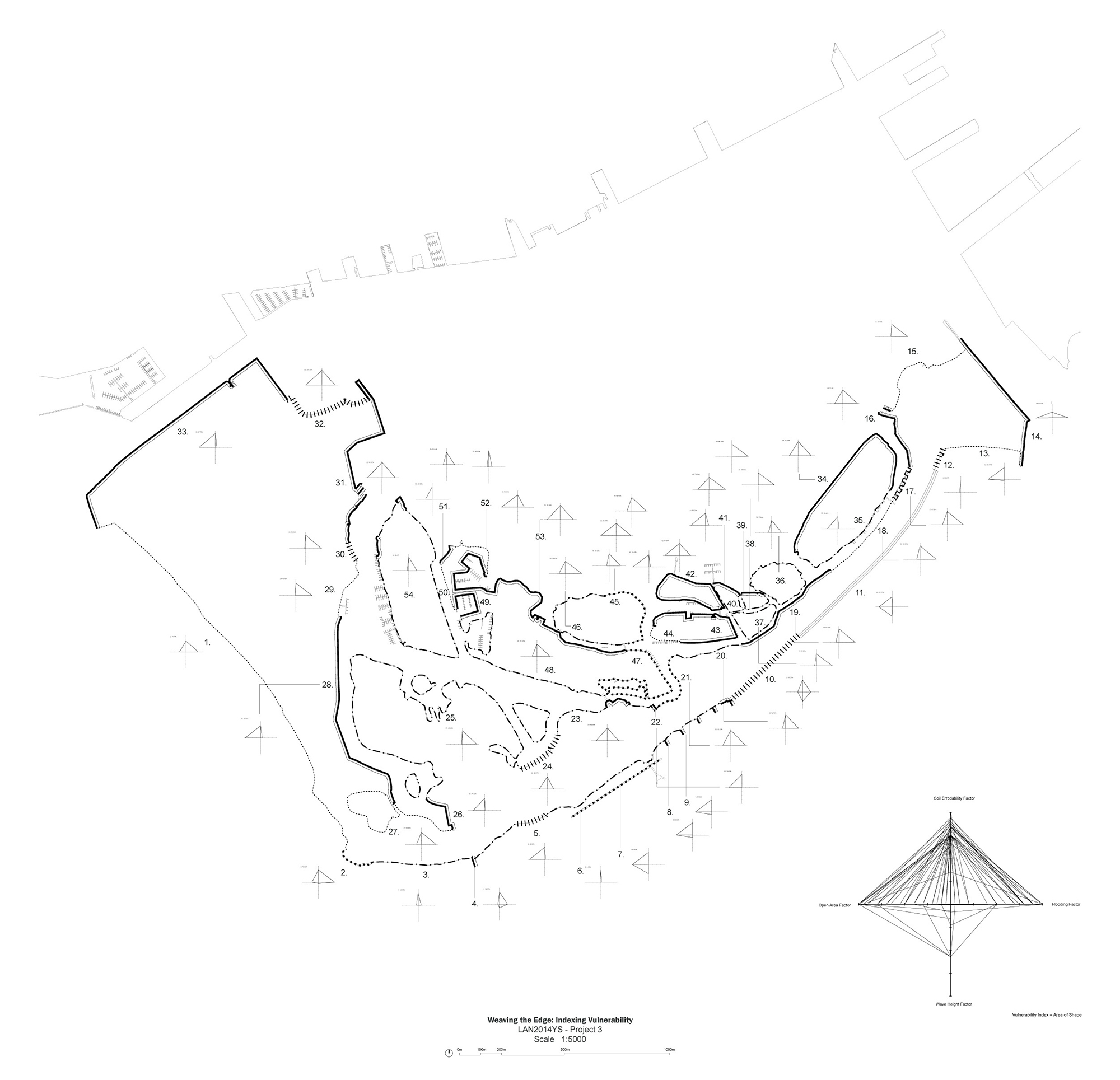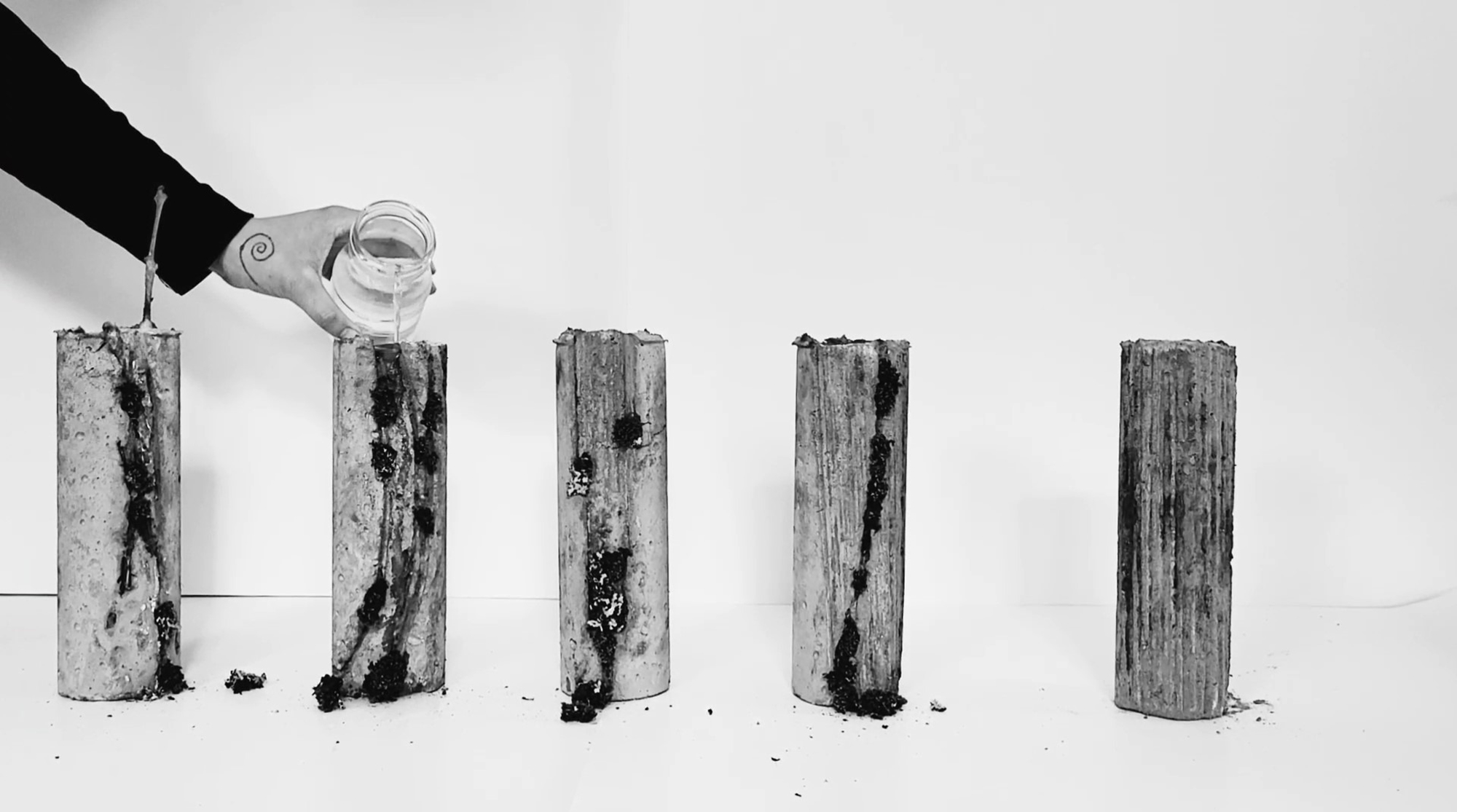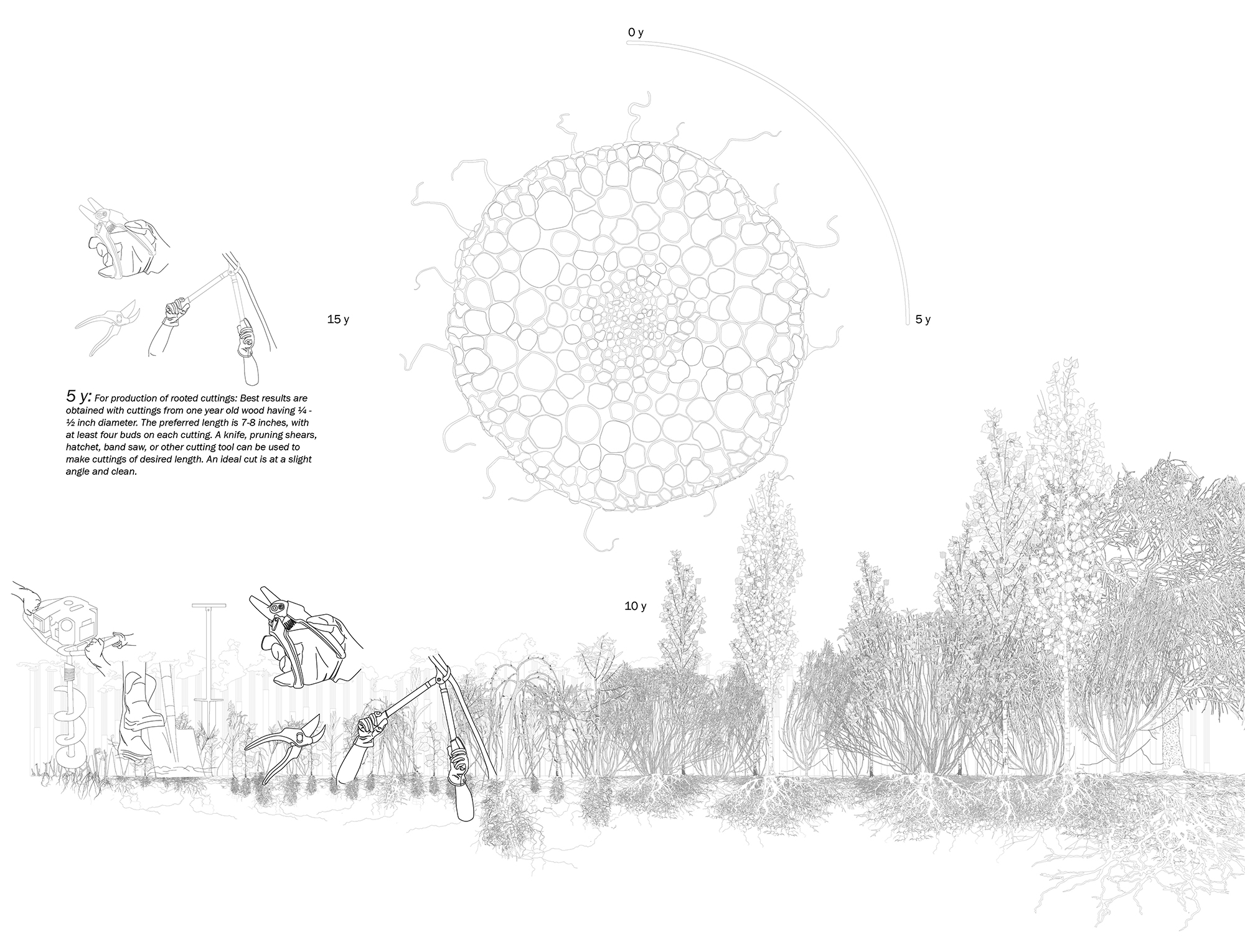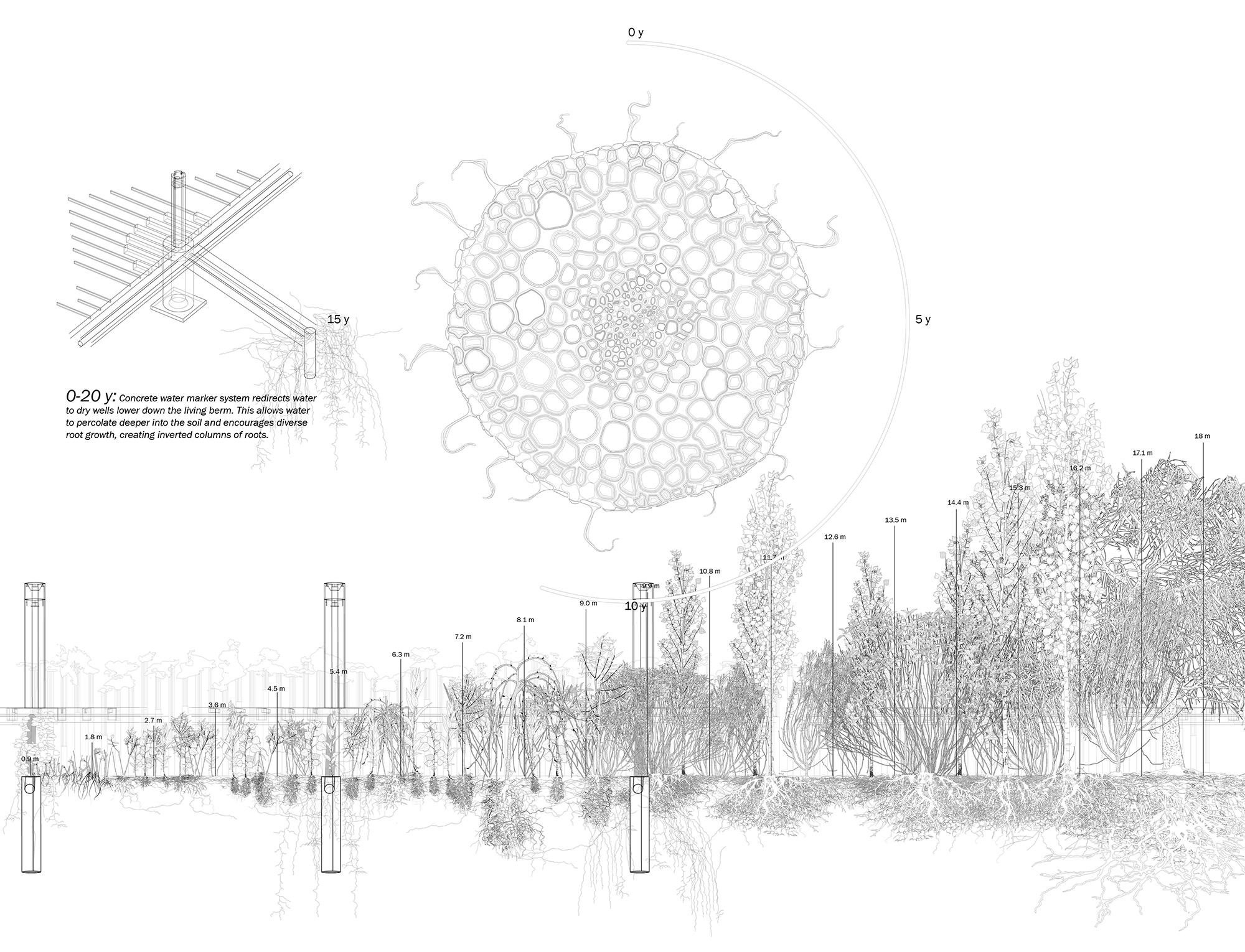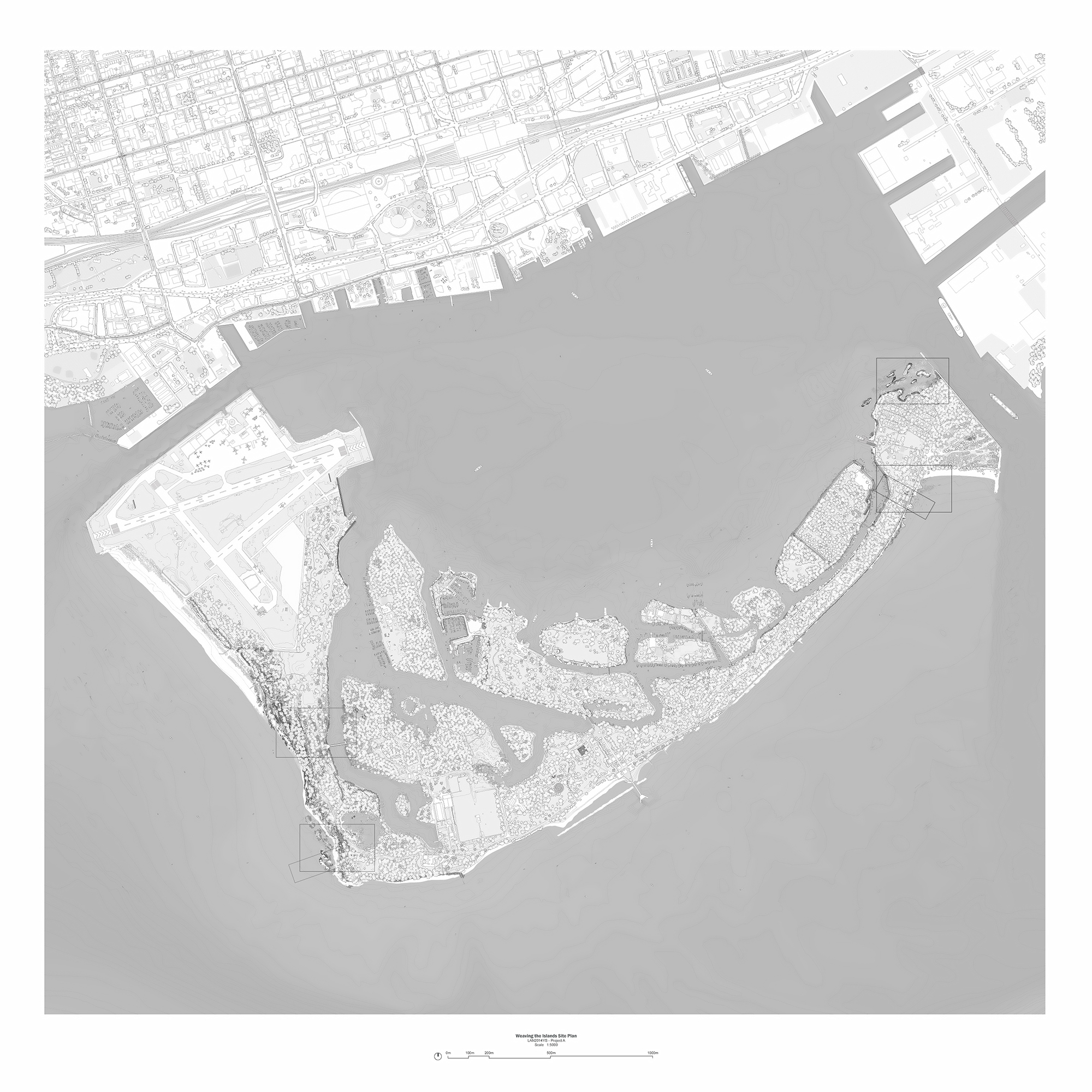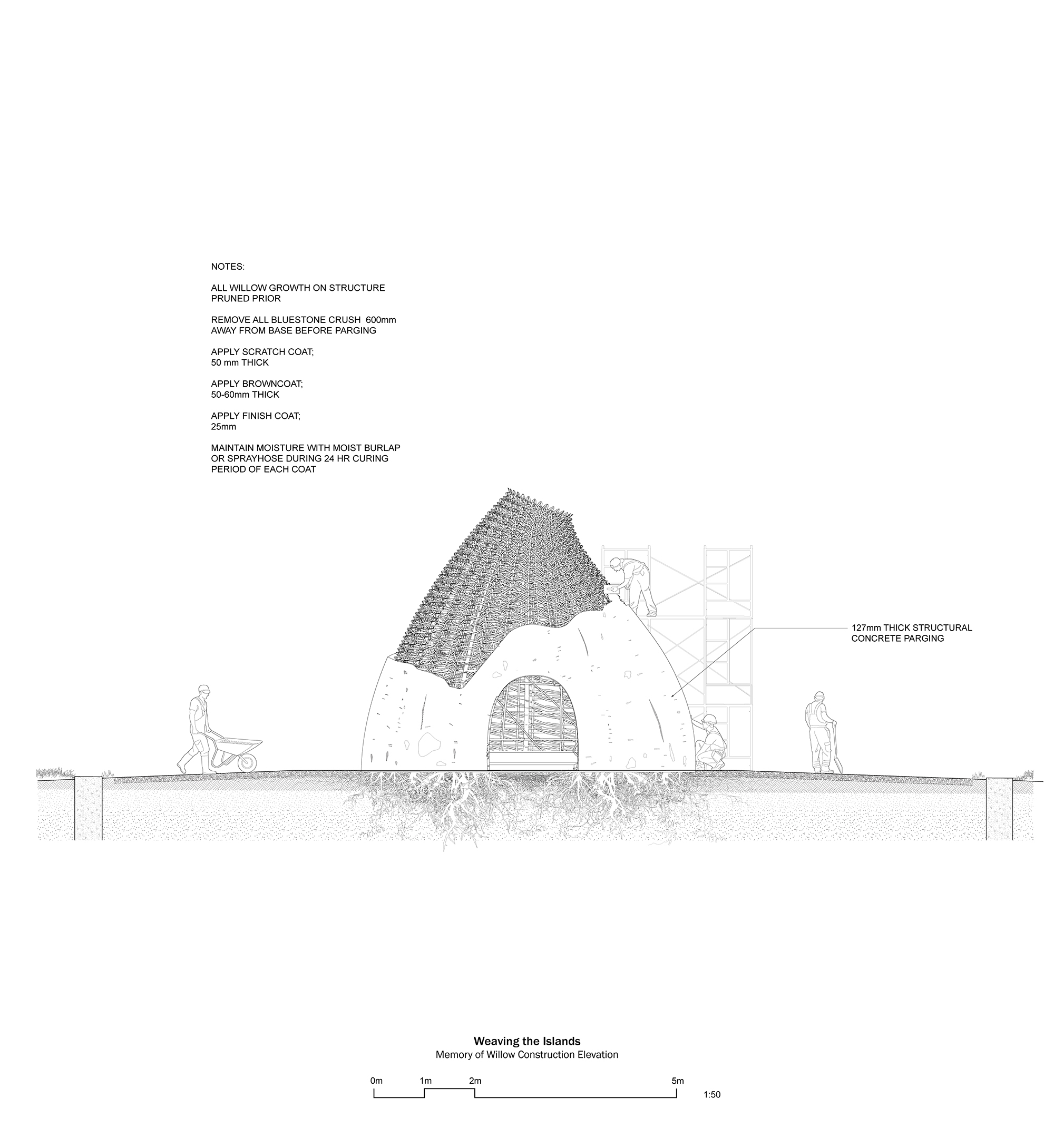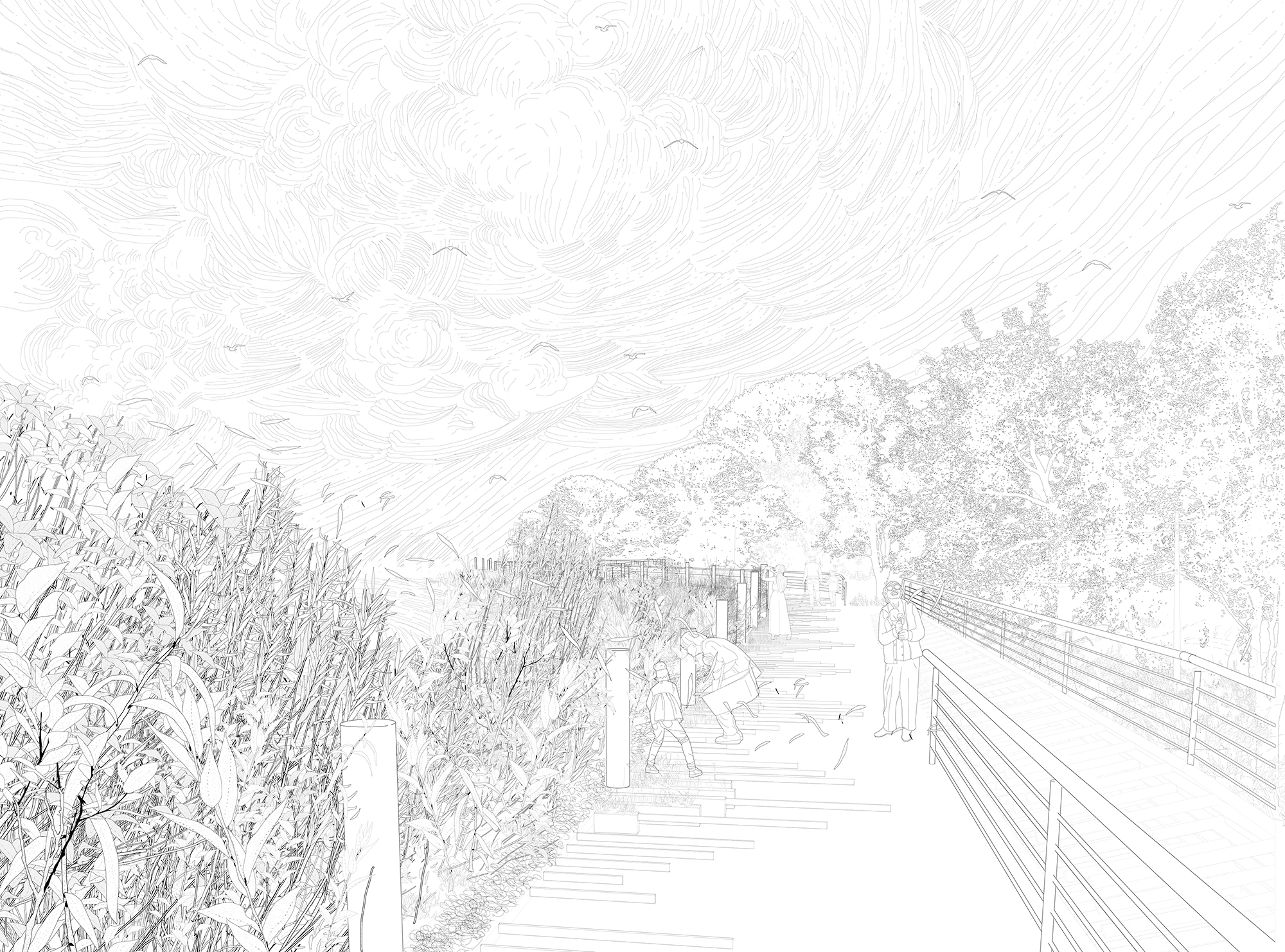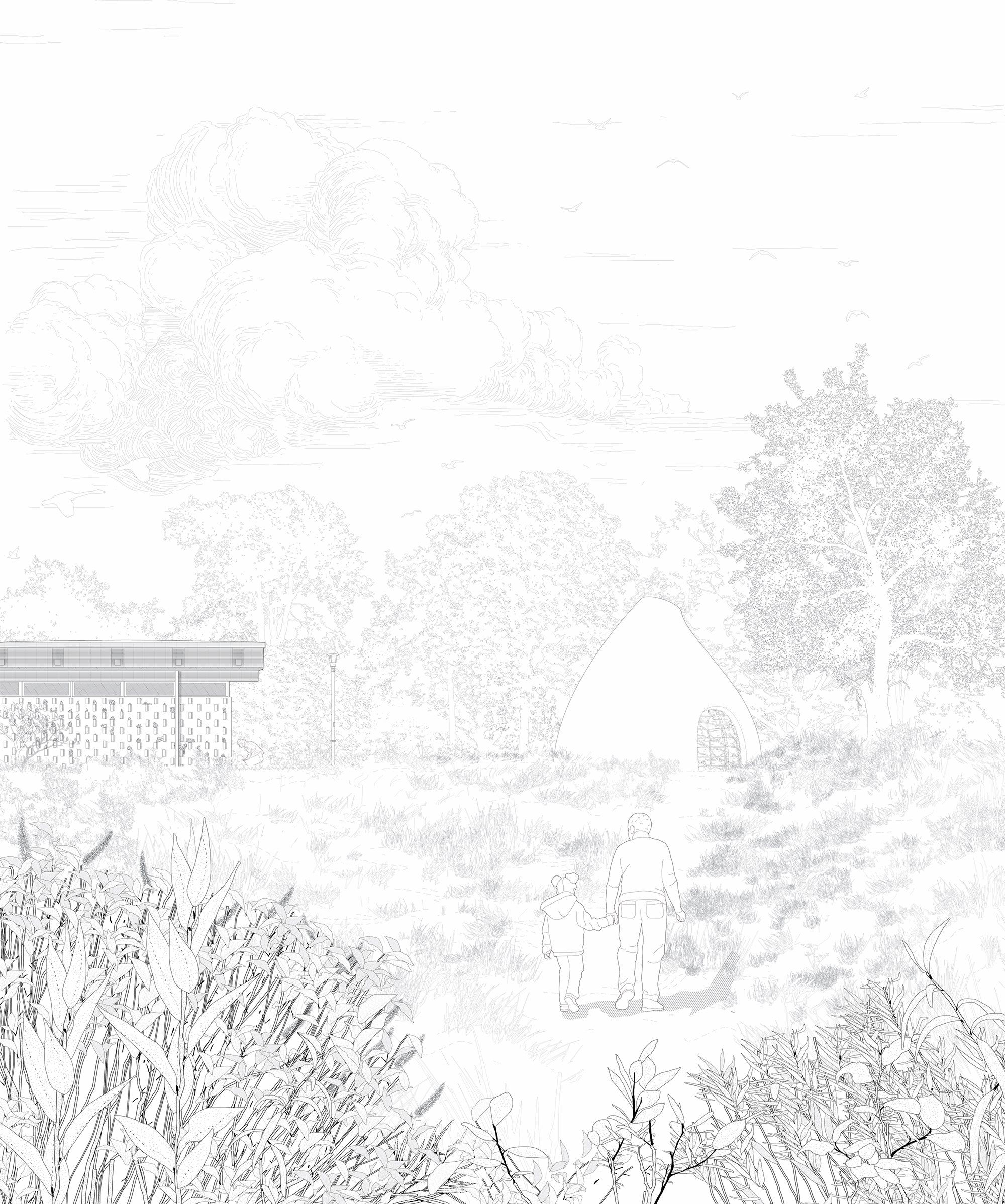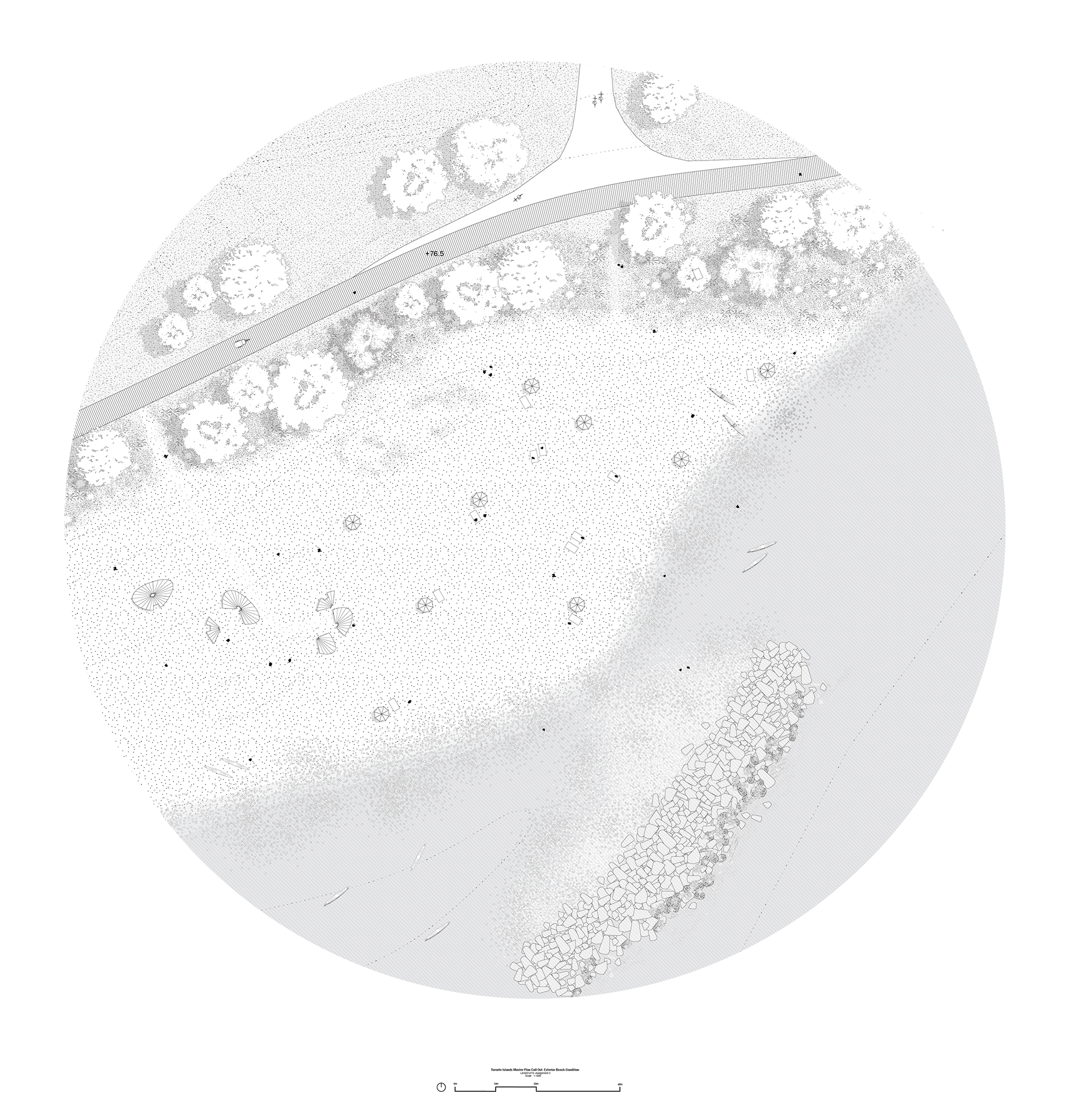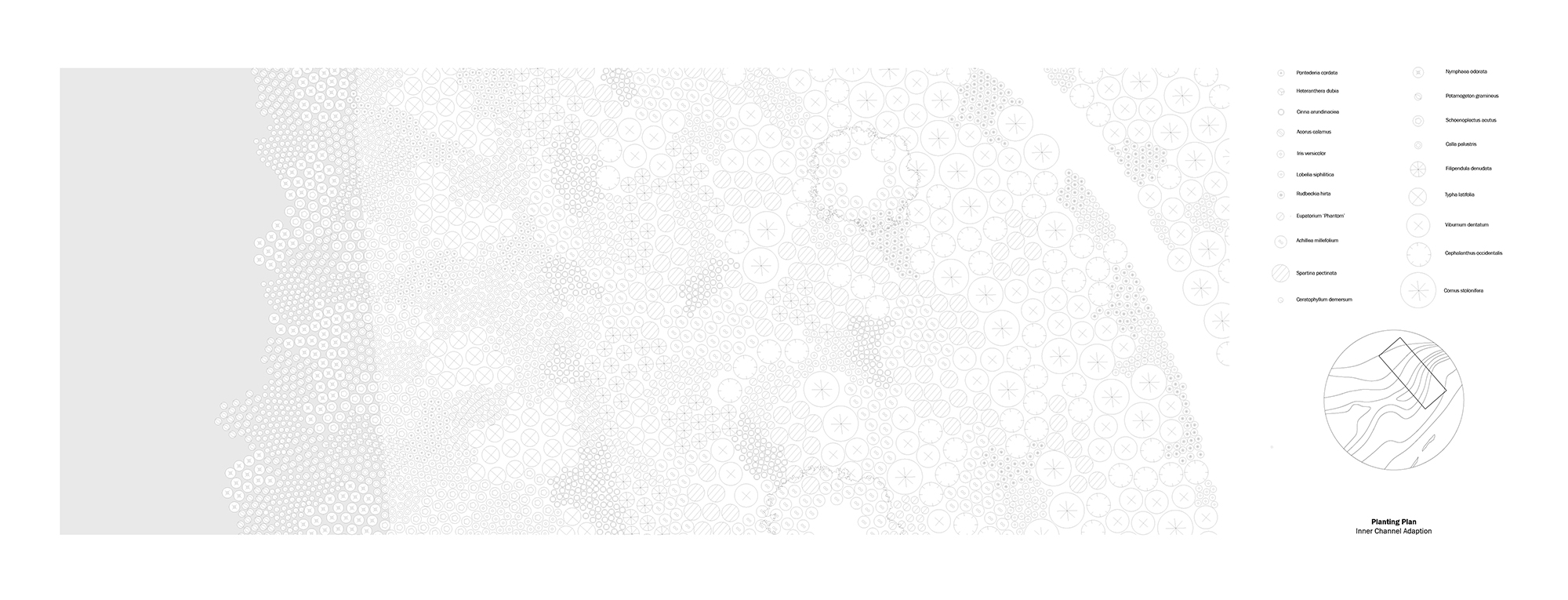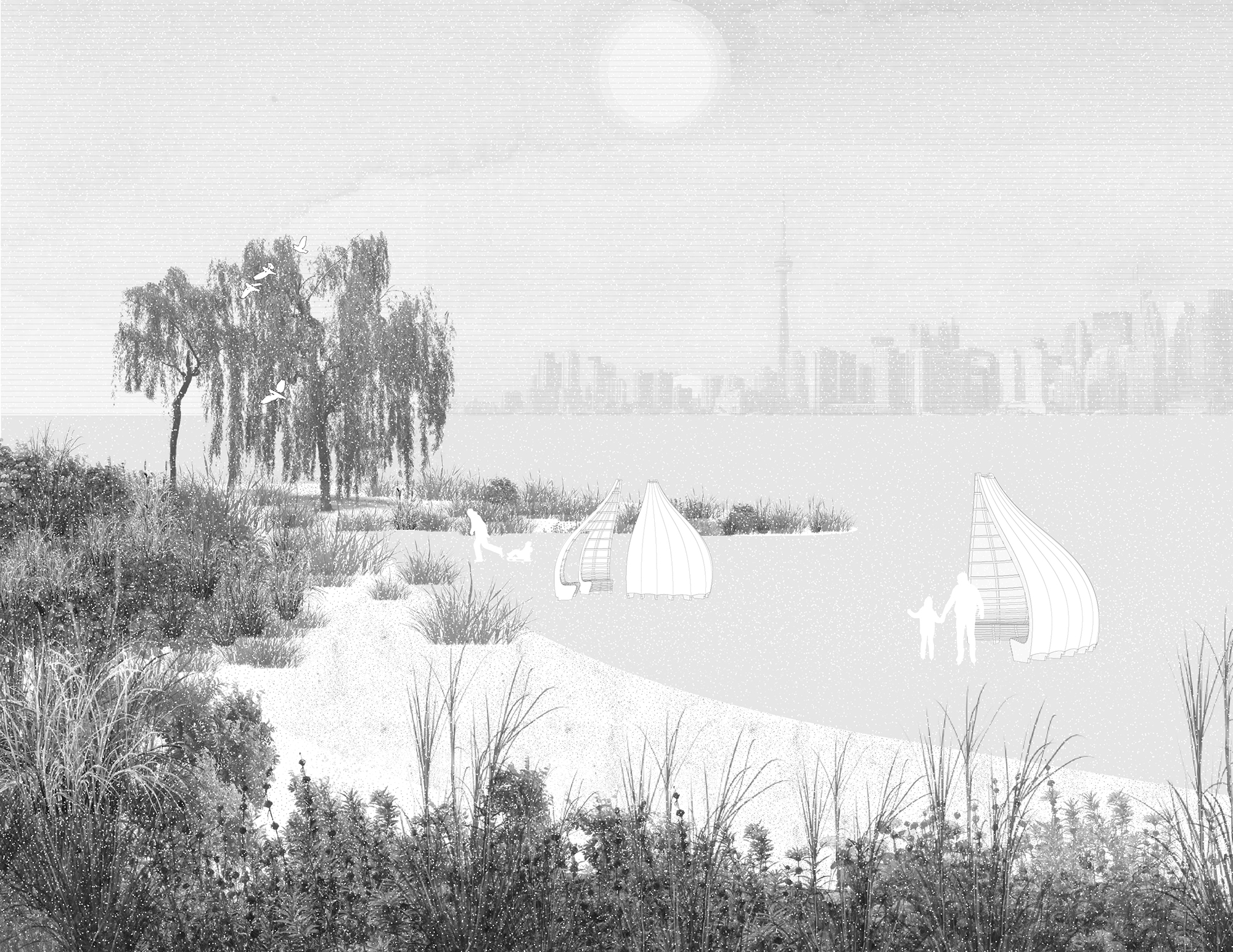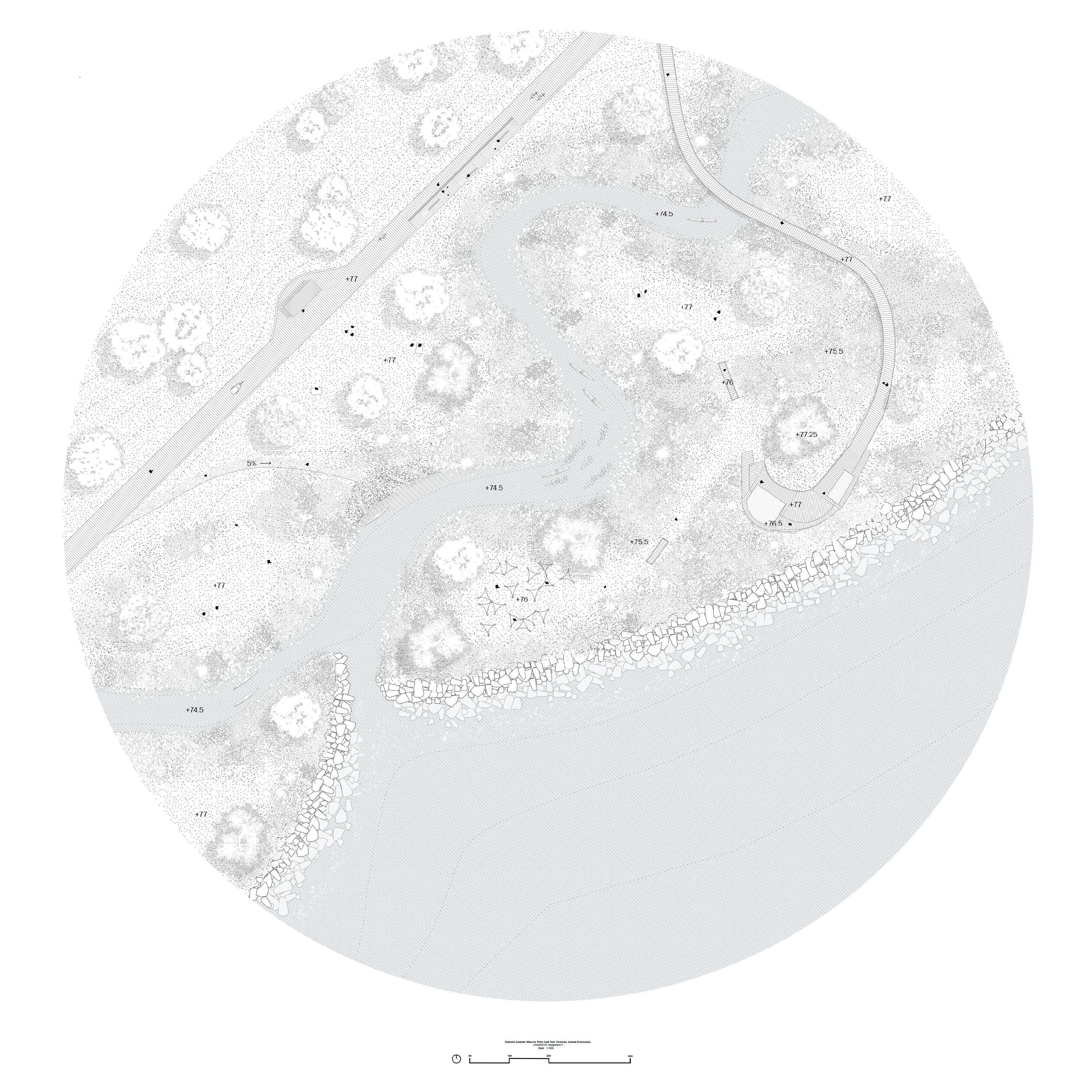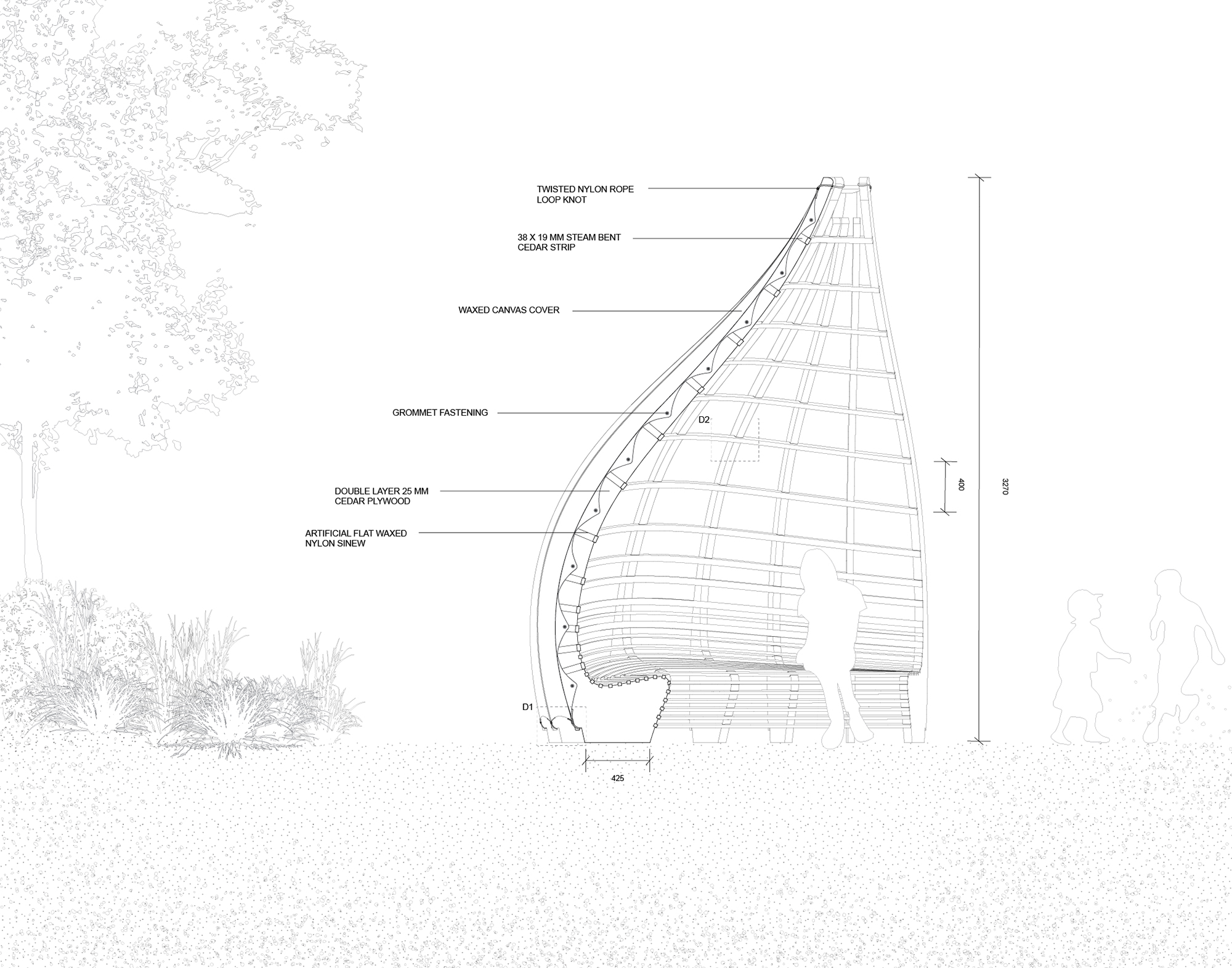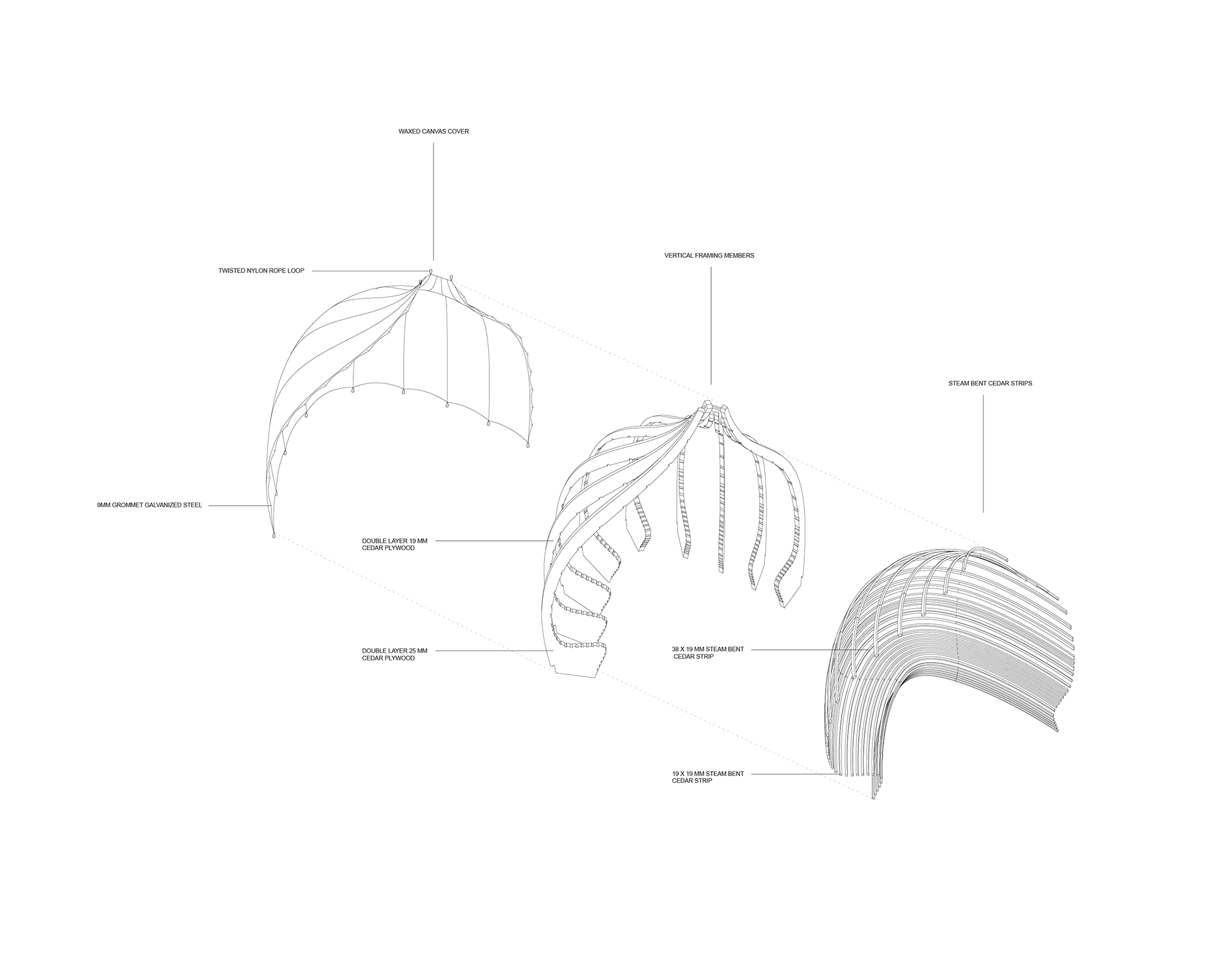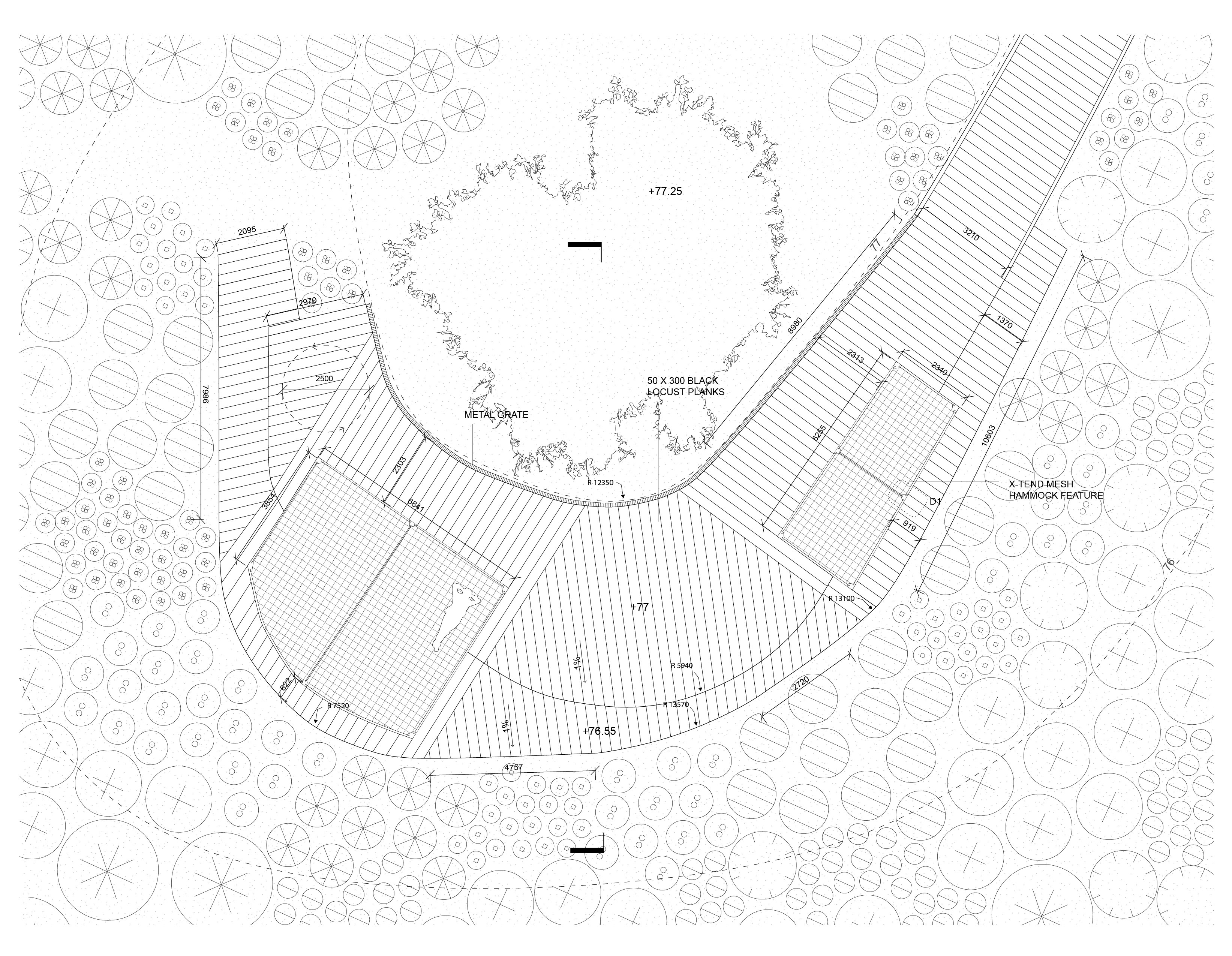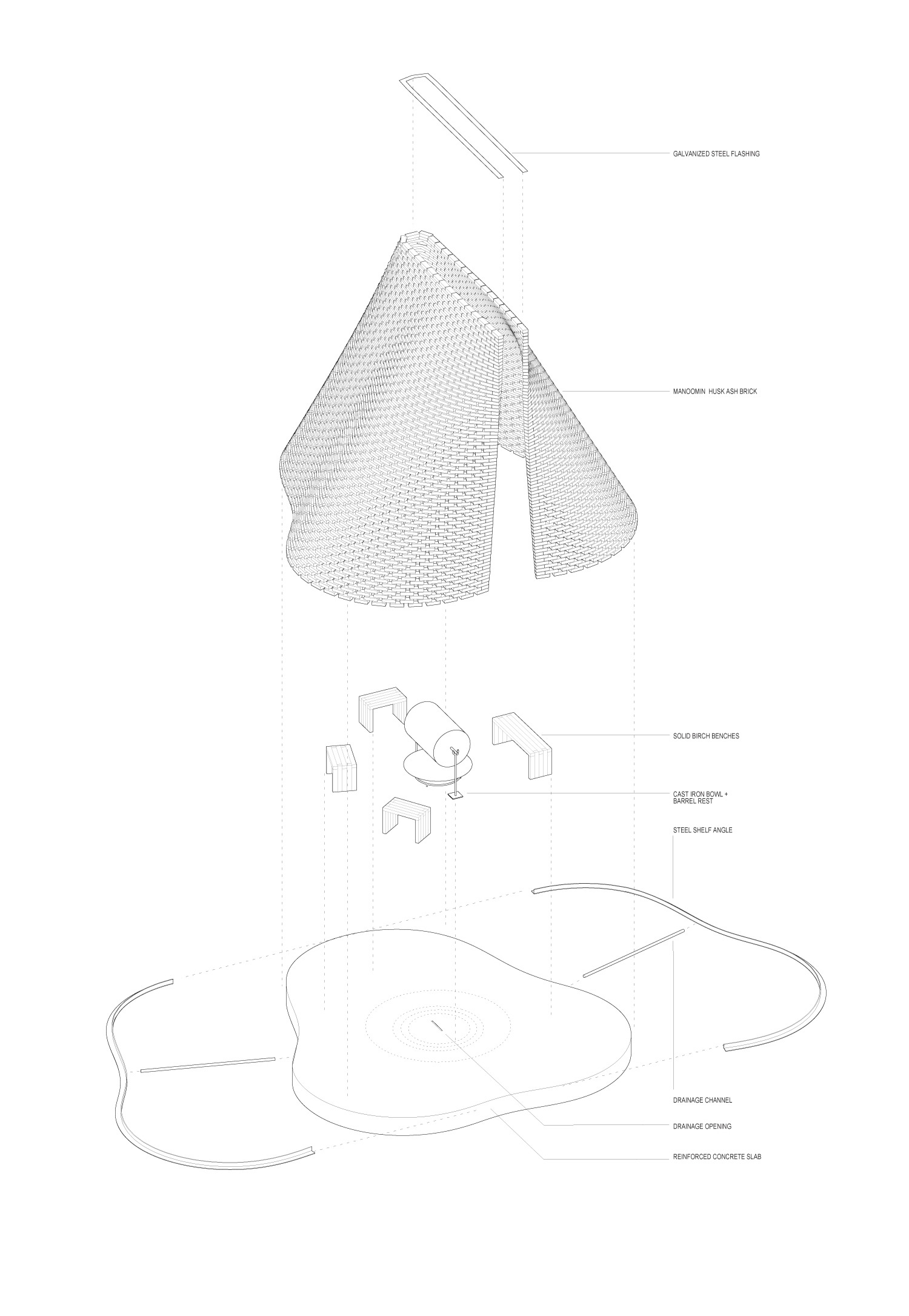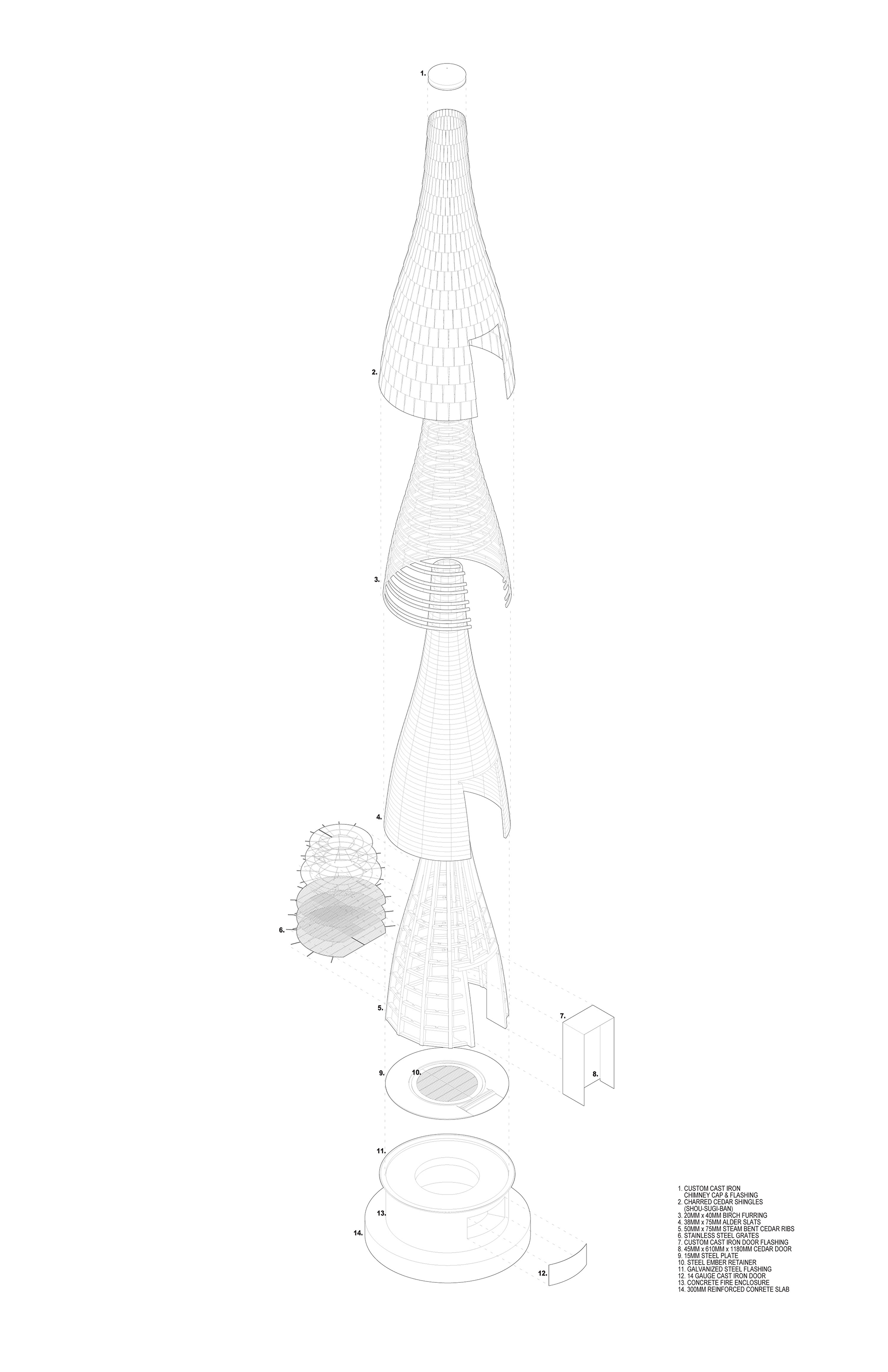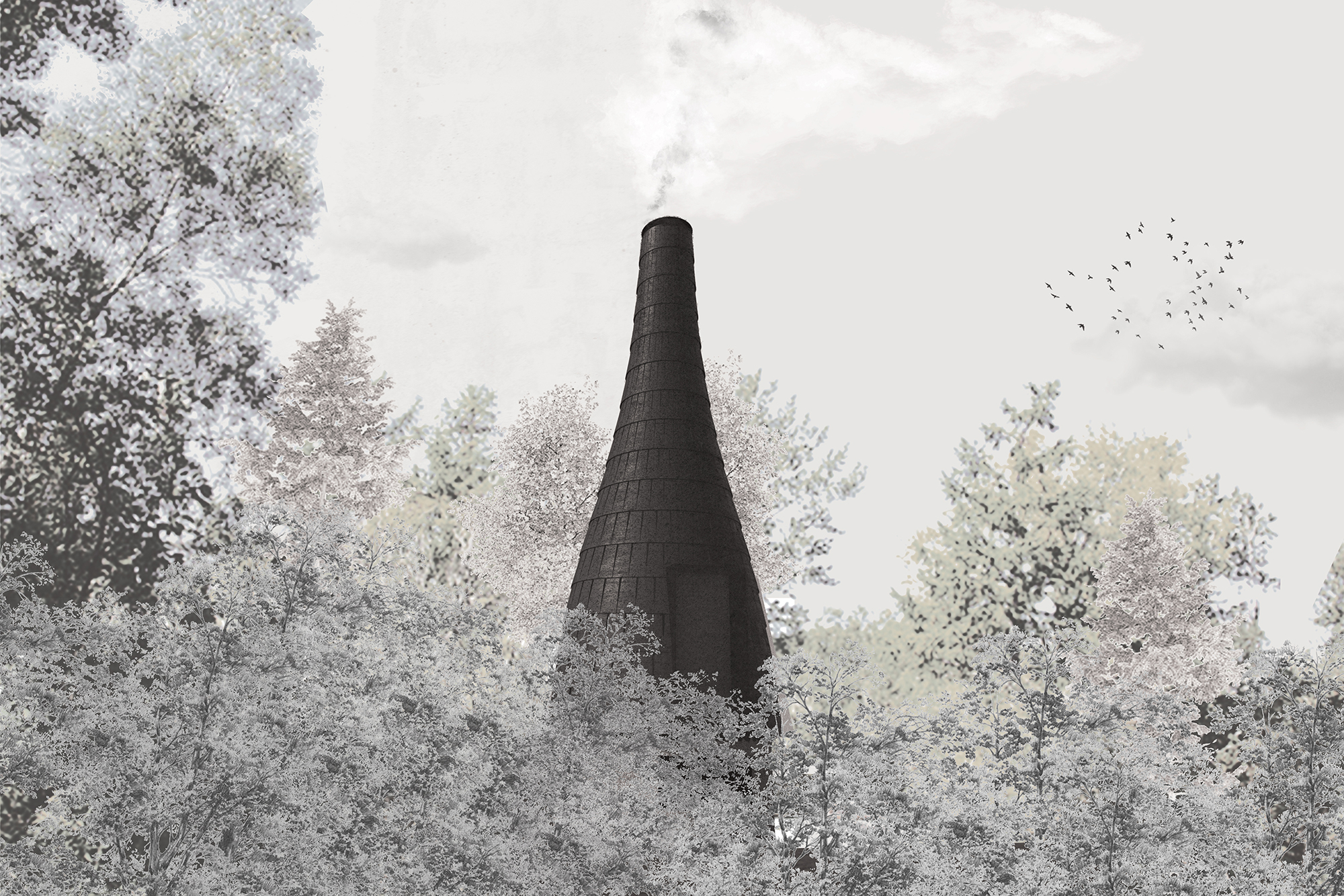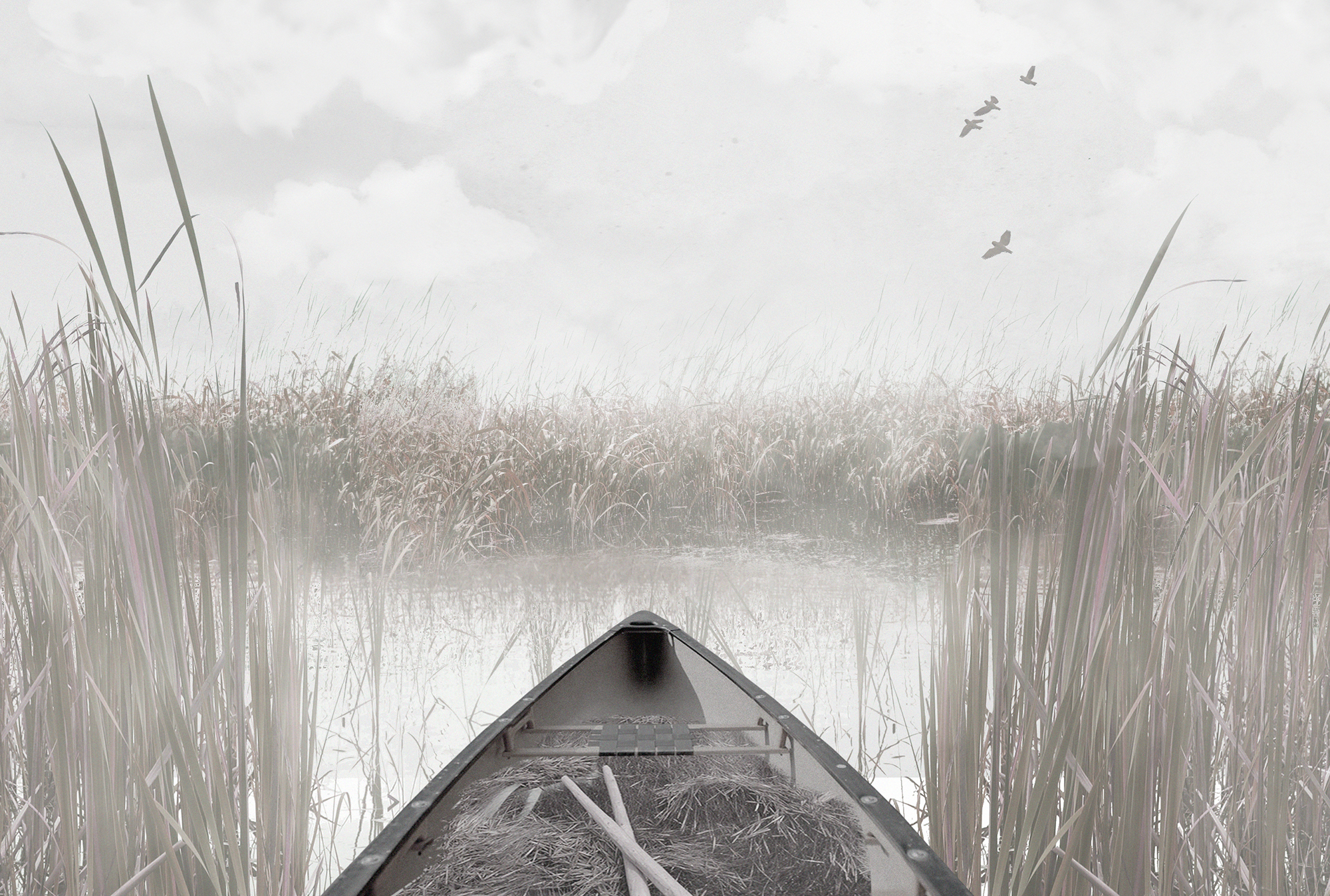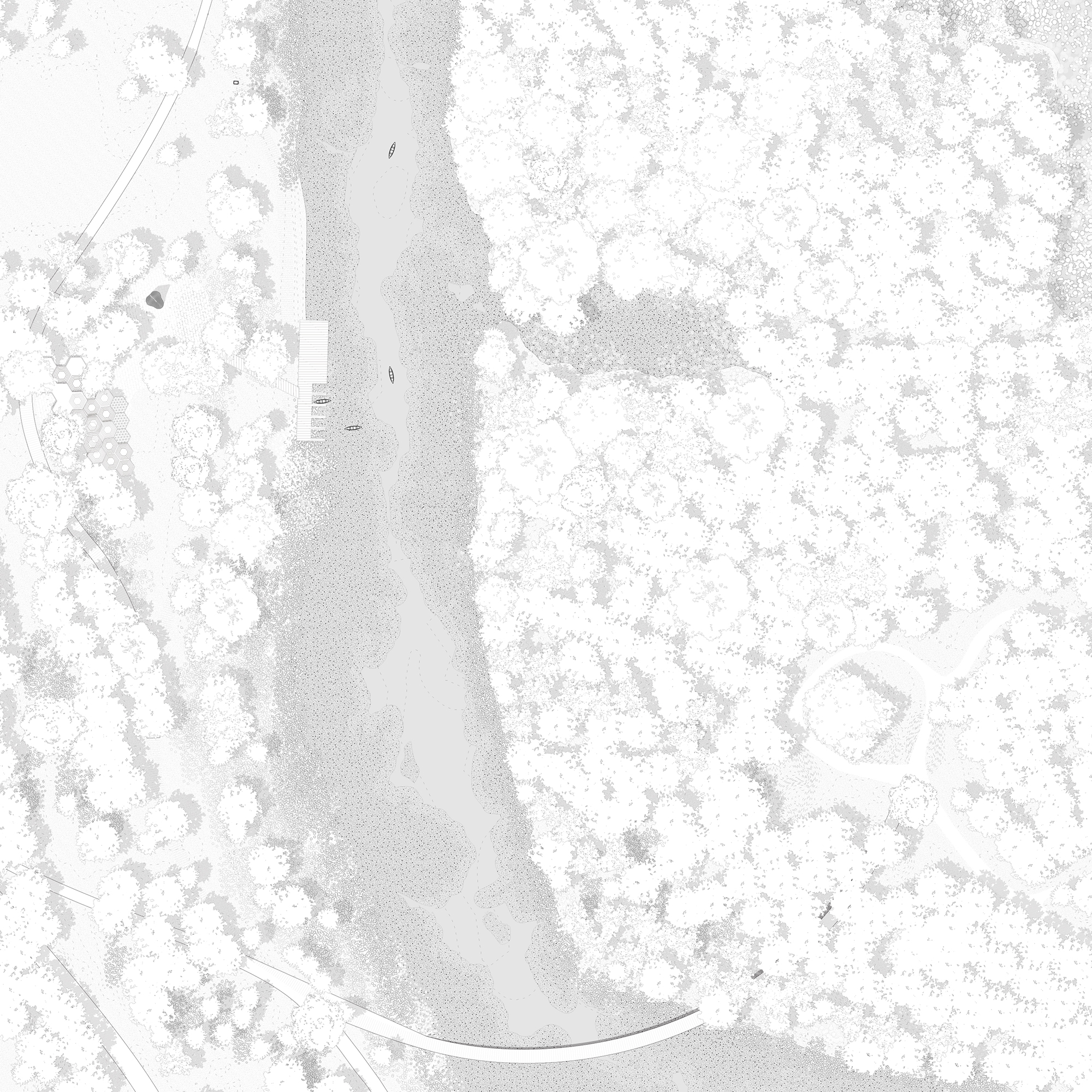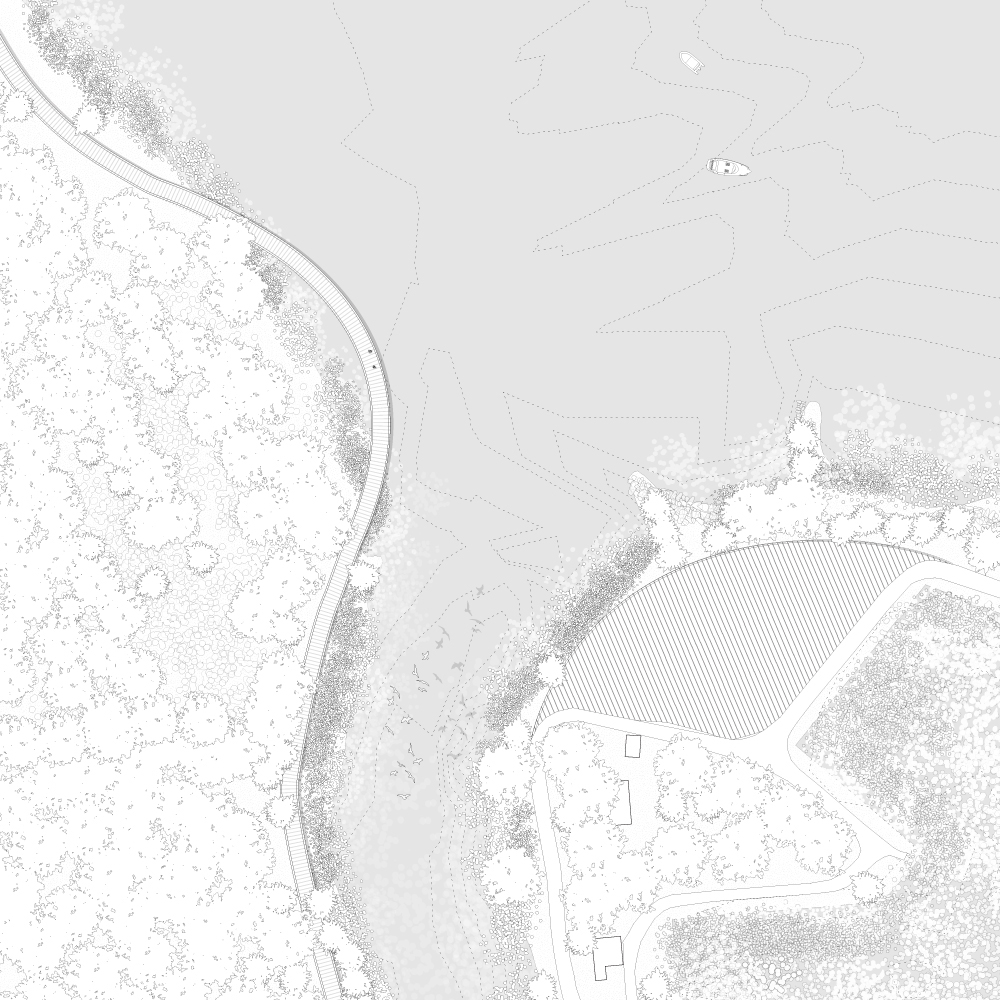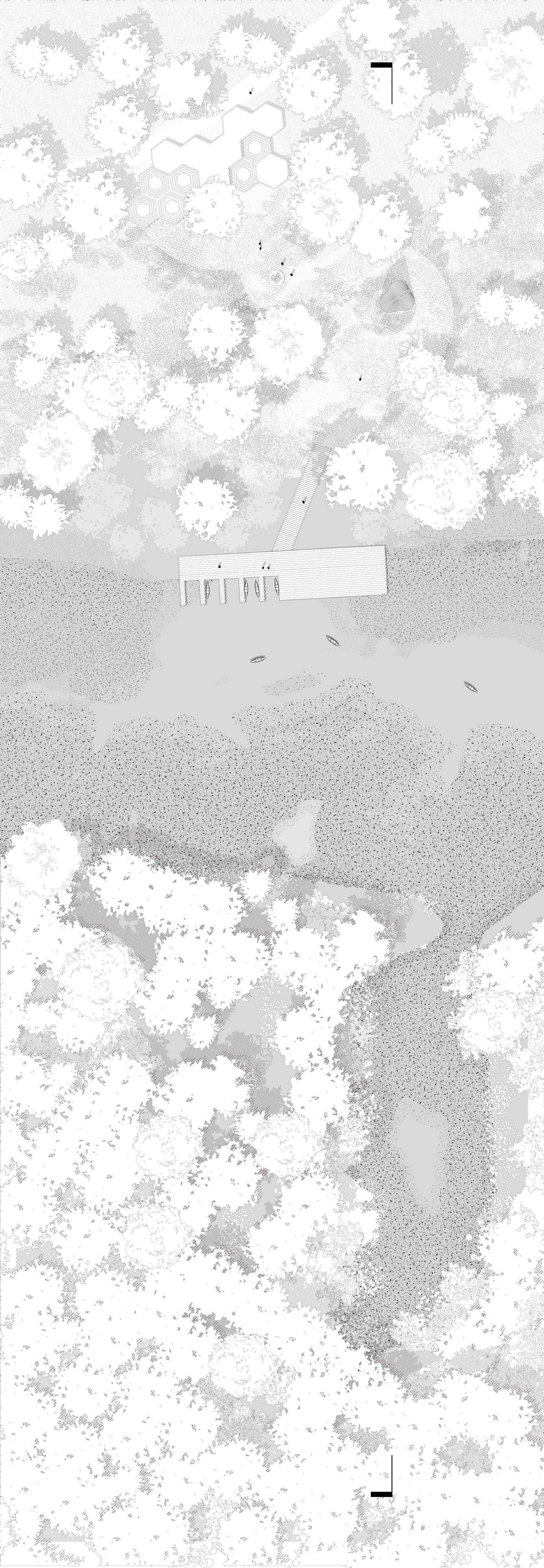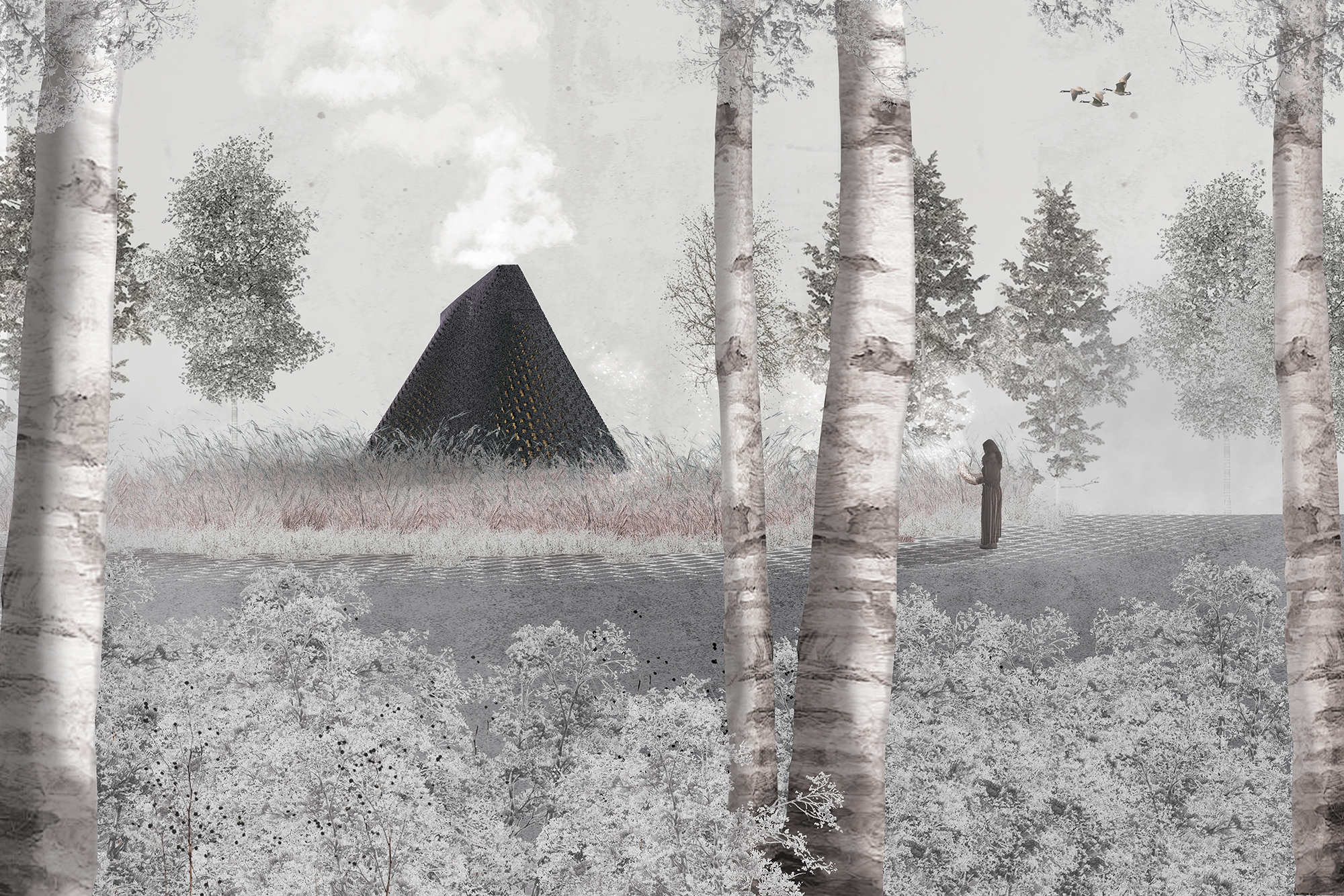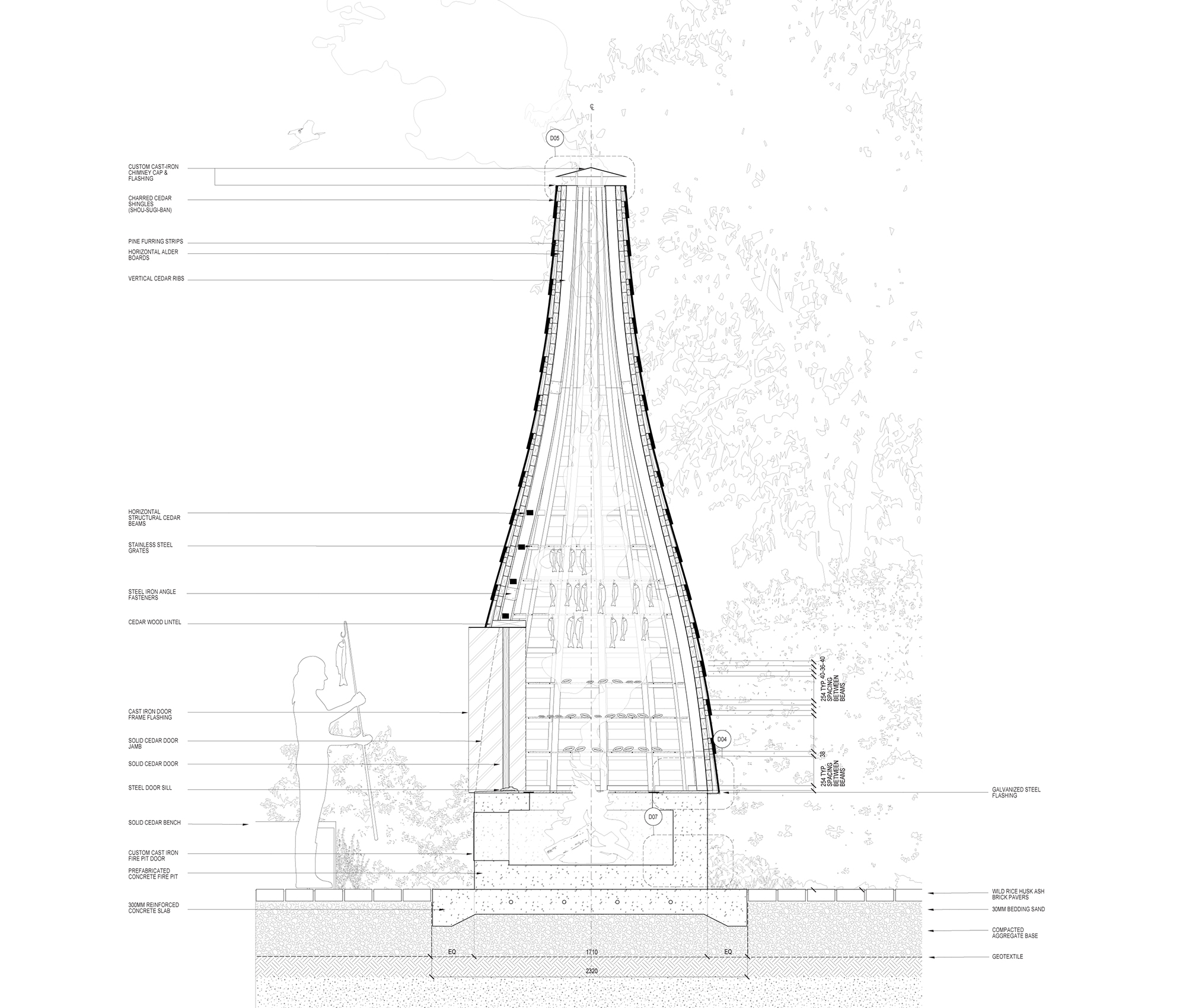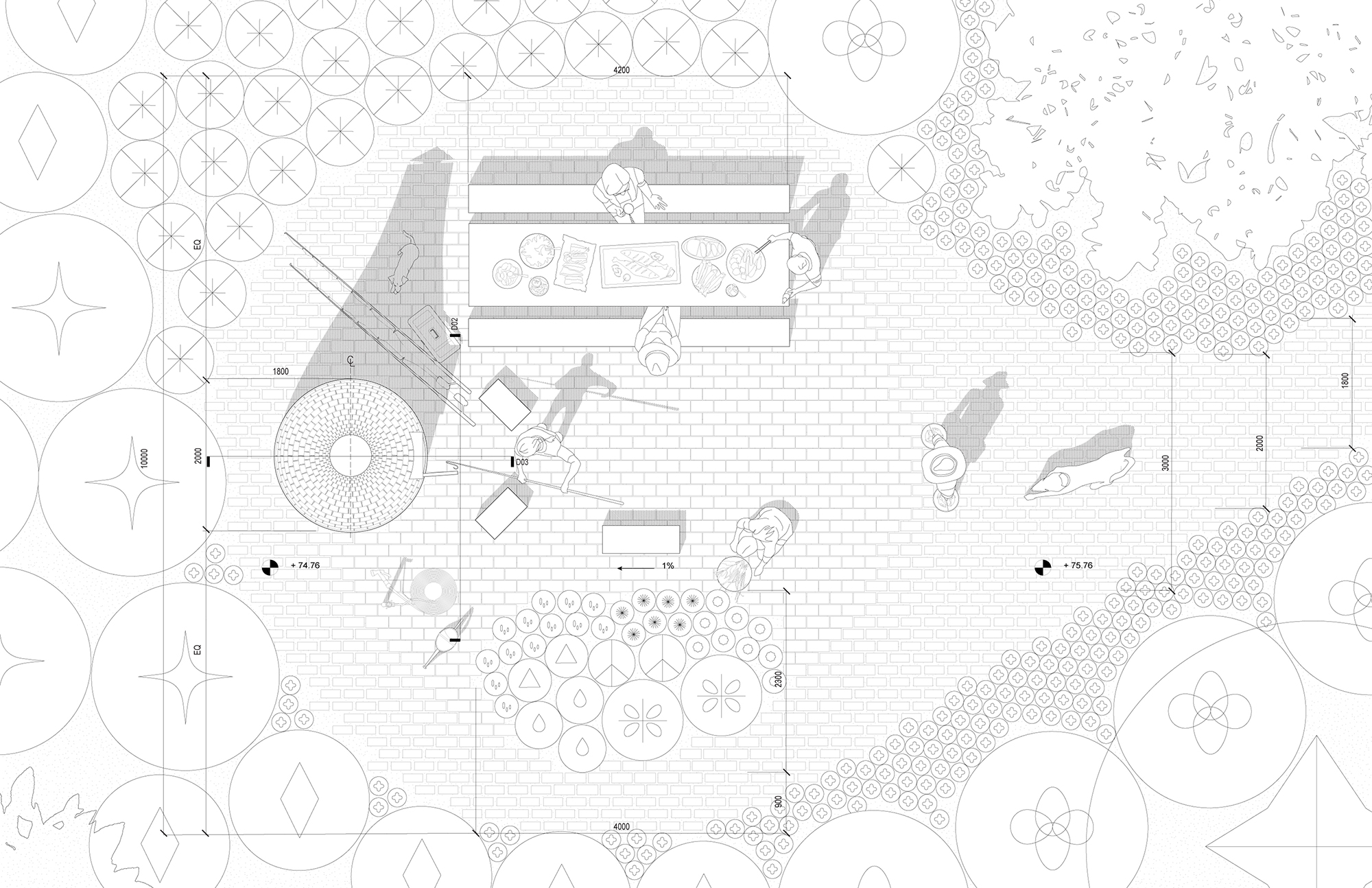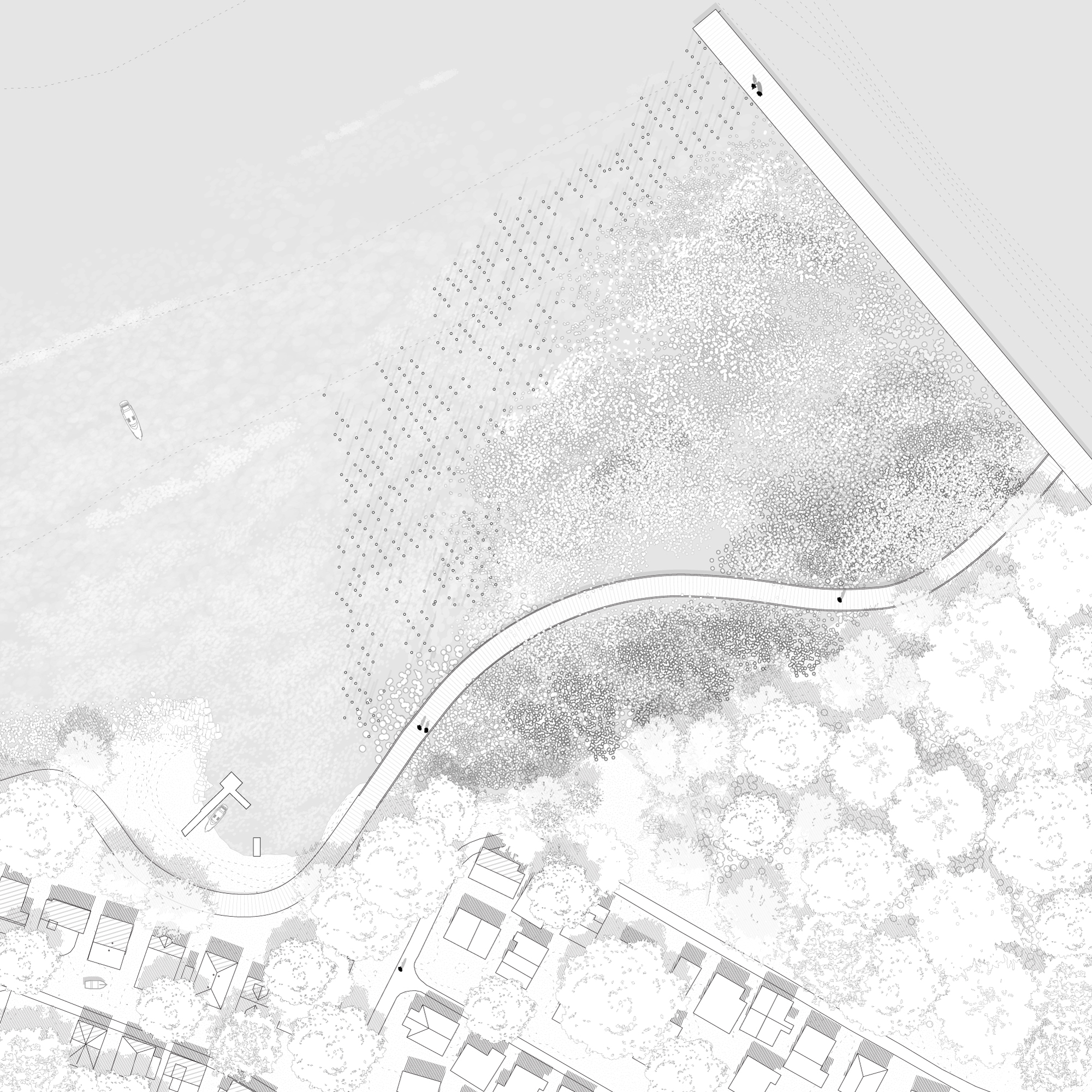LAN2014: Design Studio 4
In Design Studio 4, the Daniels Faculty's comprehensive landscape studio, Master of Landscape Architecture students develop a complete landscape design, from schematic to detailing. This semester, students focused their attention on the Toronto Islands.
Alex Sheinbaum, Agata Molendowski, and Evelyn Babalis
Alex, Agata, and Evelyn write: "Our project, Urban Graveyard | Ecological Oasis, proposes a decommissioning of the Toronto Islands in favour of creating an urban wilderness. The islands act as the city's edge to Lake Onatrio, and rather than being confined by hard edges, the islands need room for growth, succession and change. To allow for flooding, erosion, fluctuation and regeneration, a series of landscape interventions across the islands will improve the site's resiliency, including soft-edge bump-outs (SEBOs), decommissioning of buildings, and new pathways, overlooks, and gathering spaces. The islands will remain open to the public as a space to 'use at your own risk,' creating more intimate experiences. Rubble from decommissioned buildings will be reused for causeways and overlooks, with live staking to promote a living landscape, and hidey-holes from deconstructed bricks will act as gathering spaces in dry conditions and water reservoirs during floods. These new stable-but-never-still edges, over time vegetating with native wetland and spontaneous plant communities, will improve the island's ecological integrity. By 2100, an urban wilderness remains, embedded with memories and history, while standing strong and resilient to the precarity of our climate future."
(Instructors: Behnaz Assadi and Todd Douglas)
Madison Appleby and Stefan Herda
Madison and Stefan write: "The Toronto Islands' shoreline is extremely vulnerable to flooding and erosion. Instead of looking out from the edge we decided to look inward, holding the islands together with a softer process-based approach. We wove resilient living systems, in the form of planted bioengineering strategies, into the mosaic of the islands in the hopes of creating a connection to the land. A warming hut built by the community over 20 years through layers of woven willow wefts is then covered with concrete, leaving behind a memory of the willow, an imprint of its ephemeral nature. Conversely, a living berm planted with willow shrub species marks the passage of water from sky to roots through concrete water columns. This is part of a system of dry wells in place to manipulate root architecture, creating an unseen network of support, a true living berm. Bending is what a willow wants to do: it is flexible, well rooted, letting water wash over it and thriving despite environmental pressure. We must aspire to be like the willow, drawing strength from within, looking down toward the humble root to weave the islands back together."
(Instructors: Behnaz Assadi and Todd Douglas)
Dagmar Ivanenko, Temira Bruce, and Gabriella Gallo
Dagmar, Temira, and Gabriella write: "The Toronto Islands are one of Toronto’s most unique cultural, historical, and recreational landscapes, but they are under significant threat from flooding and erosion and require support to avoid further destruction. Formerly a shifting sandbar, the Toronto Islands’ inherent state is dynamic, but has been lost to walled and reinforced edges — failed attempts to keep the islands in their place. While it is not feasible to return the islands to their inherent state, their dynamism and ephemerality can be recalled through living shoreline extensions that act to mitigate flooding and erosion. In order to support the islands’ capacity to shift and restore, a kickstart is required. Removing hard barriers, replenishing sediment, and constructing living, working shorelines reinvigorates the islands, recalling their past, while looking towards their future. These living shoreline extensions include modular warming huts and lookout points to enhance the myriad existing Toronto Island experiences and support a revitalized relationship between people and water."
(Instructors: Behnaz Assadi and Todd Douglas)
Nadia Chan and Agata Mrozowski
Nadia and Agata write: "Our concept was inspired by the accumulation and dispersal of the Toronto Islands shorelines. It then extended to propagation, cultivation, gathering and harvesting. At the centre of our project, the seed of manoomin, the Ojibwe word for wild rice, expands through the inner canals of the islands, bringing myriad ecological benefits including the creation of habitat and protection from erosion. It is with this seed that our project seeks to cultivate relations with the landscape. By incorporating Indigenous practices of manoomin harvesting and smoking fish, the physical interventions we propose encourage an exchange with the land and water that goes beyond treating the shoreline as a precious entity. Instead, it's treated as a living and dynamic system, with as much to offer as we have to give."
(Instructors: Behnaz Assadi and Todd Douglas)




